HGF/c-Met Inhibition as Adjuvant Therapy Improves Outcomes in an Orthotopic Mouse Model of Pancreatic Cancer
Abstract
Simple Summary
Abstract
1. Introduction
2. Materials and Methods
2.1. Orthotopic Mouse Models
2.2. Tumour Implantation
2.3. Tumour Resection
2.4. Treatments
- Control (Ctrl): IgG, 300 μg/mouse, by intraperitoneal (i.p.) injection daily (Amgen Inc., Thousand Oaks, CA, USA) and soybean oil, 10 μL/g by daily oral gavage (Sigma-Aldrich Pty Ltd., Castle Hill, NSW, Australia);
- Gemcitabine (G): Gemcitabine, 75 mg/kg i.p. daily (Hospira, Mulgrave, VIC, Australia) alone;
- HGF/c-Met inhibition (HCI): combination of rilotumumab, 300 μg/mouse i.p. daily (Amgen Inc.) and Compound A, suspended in soybean oil, 60 mg/kg by daily oral gavage (Amgen Inc.);
- Combination of Gemcitabine and HGF/c-Met inhibition (G+HiCi): Gemcitabine, rilotumumab and Compound A.
2.5. Assessment of Effects of Treatment
2.6. Circulating Tumour Cells and Circulating Pancreatic Stellate Cells
2.7. Immunocytochemistry
2.8. Immunohistochemistry
2.9. Single-Cell RNA Sequencing
2.10. Bioinformatics
2.11. Non-Bioinformatics Statistical Analysis
3. Results
3.1. Effects of HGF/c-Met Adjuvant Treatments
3.1.1. HGF/c-Met Inhibition Inhibited Tumour Progression Post-Resection
3.1.2. HGF/c-Met Inhibition Is Associated with Reduced Tumour Vascularity
3.1.3. Circulating Tumour Cells as a Marker of Recurrence
3.1.4. Both G and HiCi Treatments Reduced CTC Counts
3.1.5. HiCi Treatment Reduced Circulating Pancreatic Stellate Cells (cPSCs)
3.2. Transcriptomic Characterisation of cPSCs
3.2.1. Circulating PSC Identities Confirmed by ScRNA-seq
3.2.2. Potential Pathways Influencing cPSCs
4. Discussion
4.1. HGF/c-Met Inhibition as Adjuvant Treatment
4.2. Circulating PSCs—A Novel cellular Intermediary for PC Metastasis?
5. Implications and Conclusions
Author Contributions
Funding
Institutional Review Board Statement
Informed Consent Statement
Data Availability Statement
Conflicts of Interest
Appendix A
Appendix A.1. Orthotopic Mouse Models
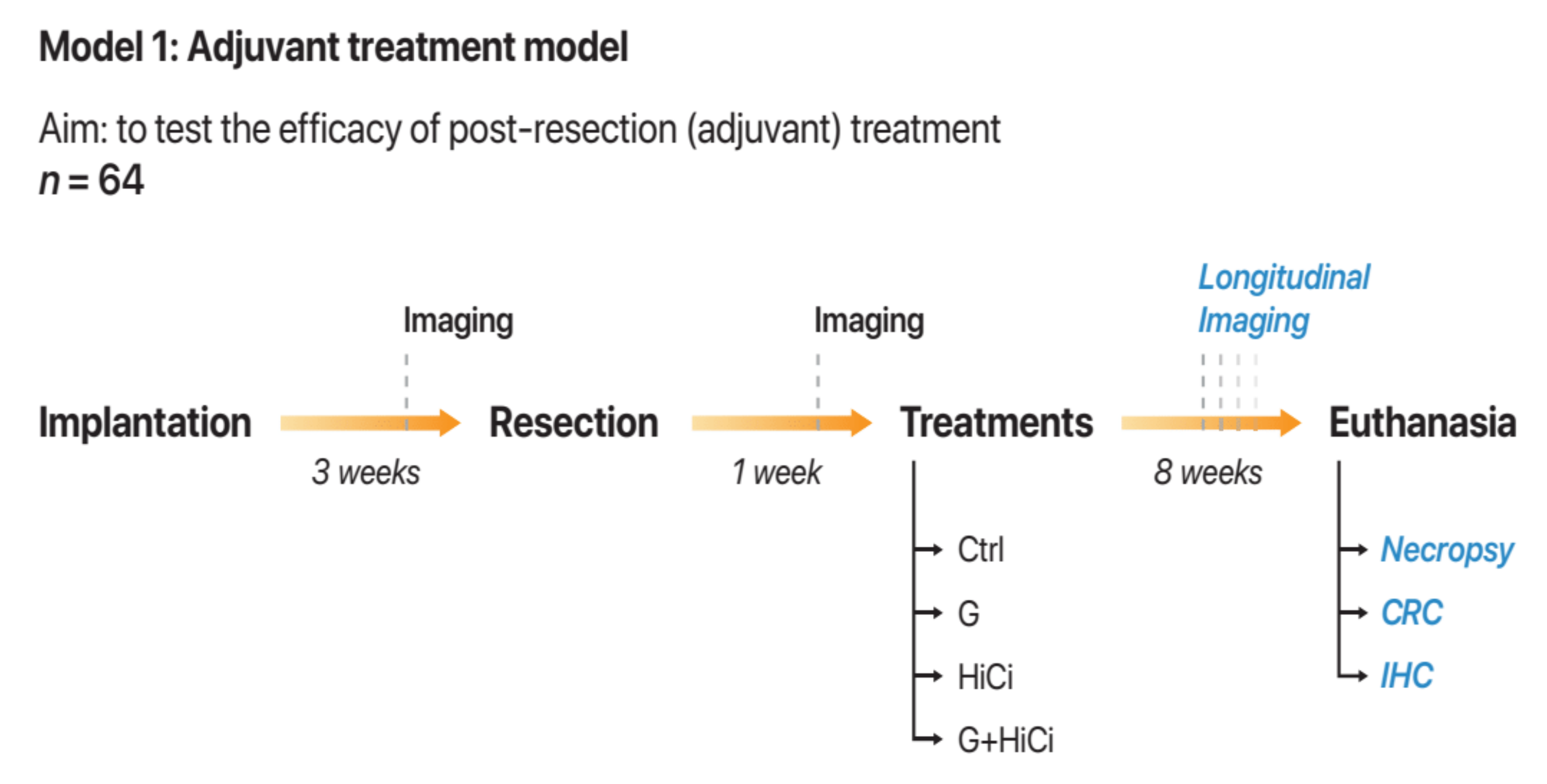
Appendix A.2. Tumour Implantation
Appendix A.3. Tumour Resection
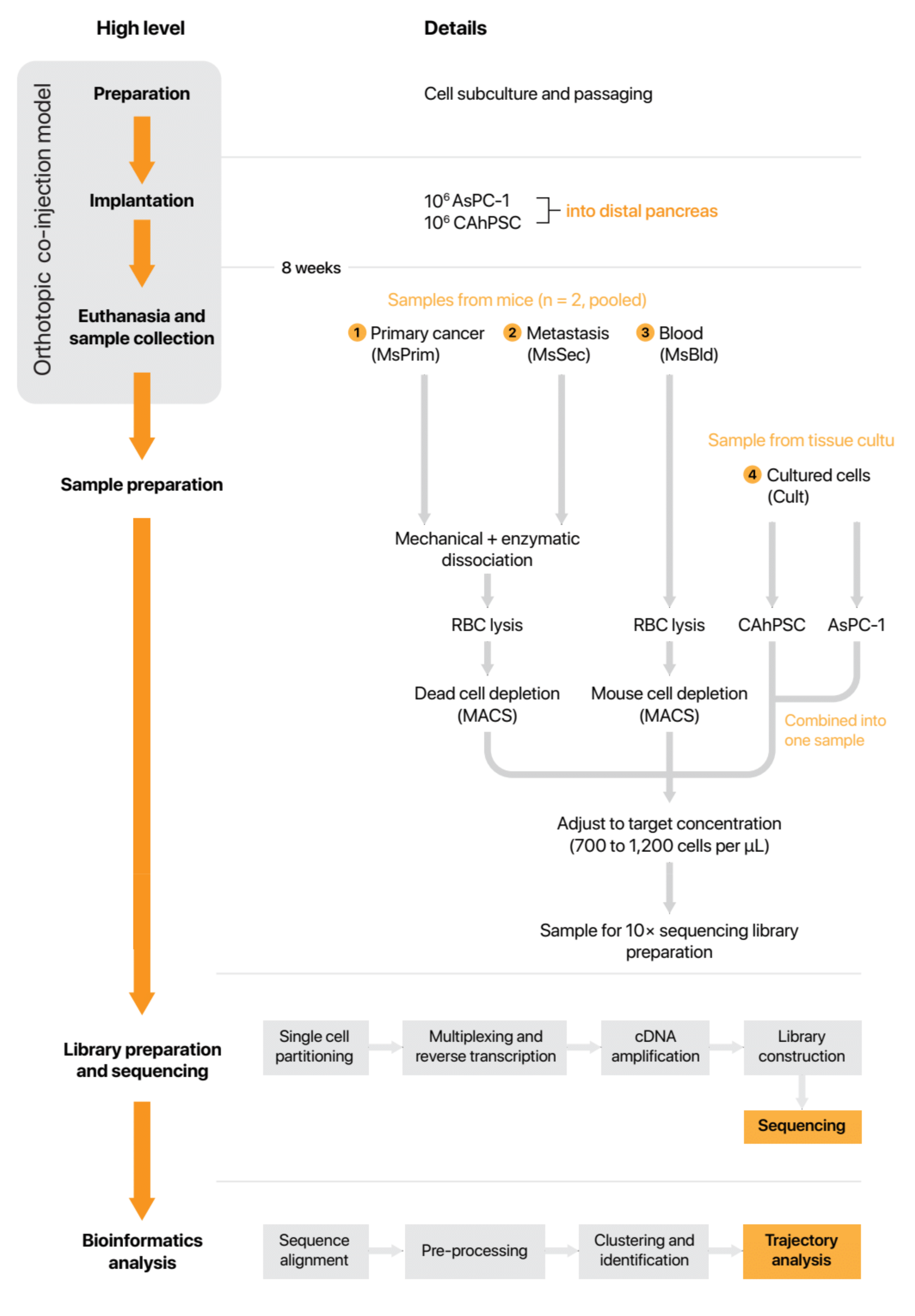
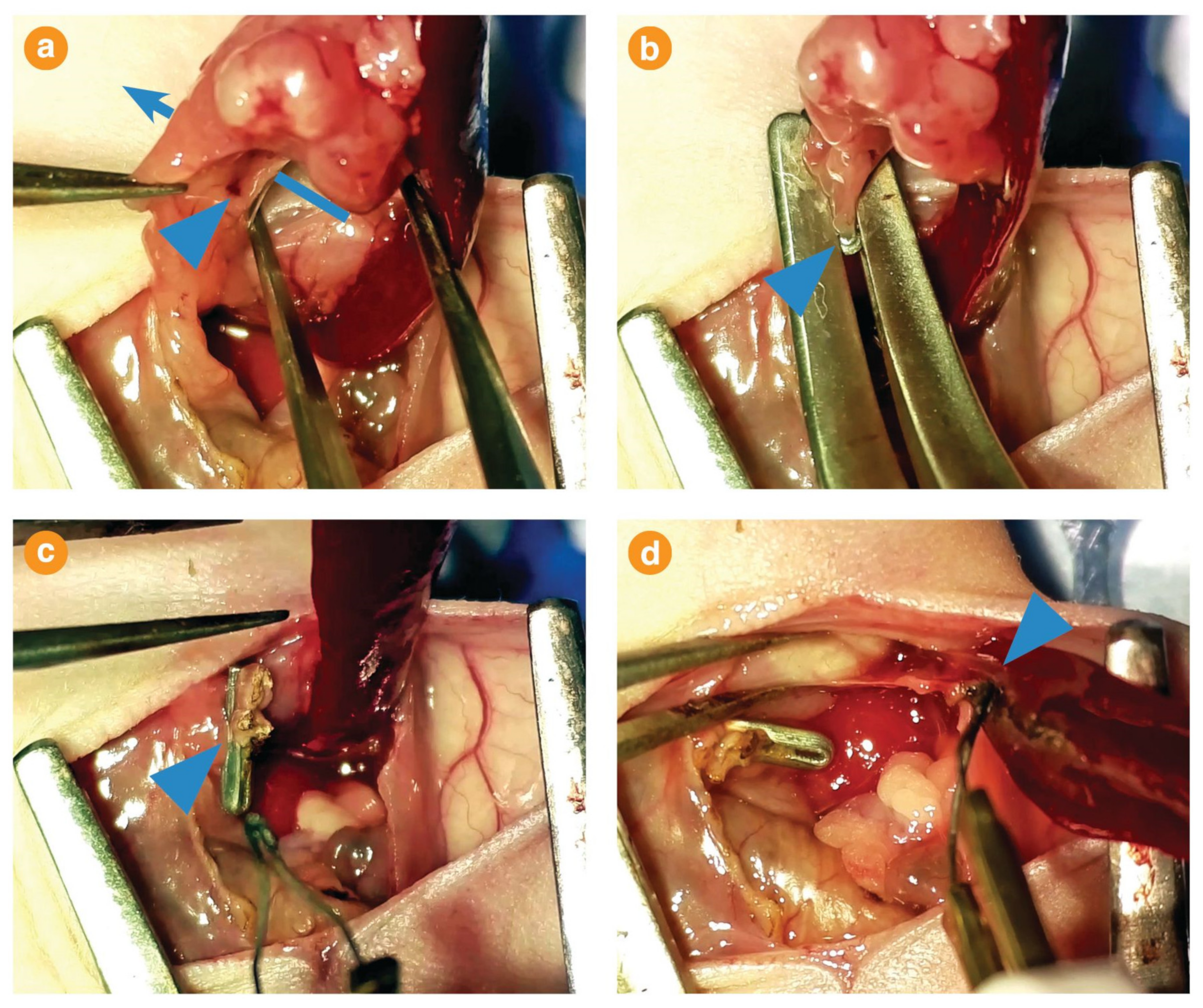
Appendix A.4. Treatments
- Control (Ctrl): IgG, 300 μg/mouse, by intraperitoneal (i.p.) injection daily (Amgen Inc., Thousand Oaks, CA, USA) and soybean oil, 10 μL/g by daily oral gavage (Sigma-Aldrich Pty Ltd., Castle Hill, NSW, Australia);
- Gemcitabine (G): Gemcitabine, 75 mg/kg i.p. daily (Hospira, Mulgrave, VIC, Australia) alone;
- HGF/c-Met inhibition (HiCi): combination of rilotumumab, 300 μg/mouse i.p. daily (Amgen Inc.) and Compound A, suspended in soybean oil, 60 mg/kg by daily oral gavage (Amgen Inc.)
- Combination of Gemcitabine and HGF/c-Met inhibition (G+HiCi): Gemcitabine, rilotumumab and Compound A.
Appendix A.5. In Vivo Bioluminescence Imaging
Appendix A.6. Necropsy and Blood Sample Collection
Appendix A.7. Enrichment of Circulating Tumour Cells and Circulating Pancreatic Stellate Cells
Appendix A.8. Identification of Cells on Immunocytochemistry
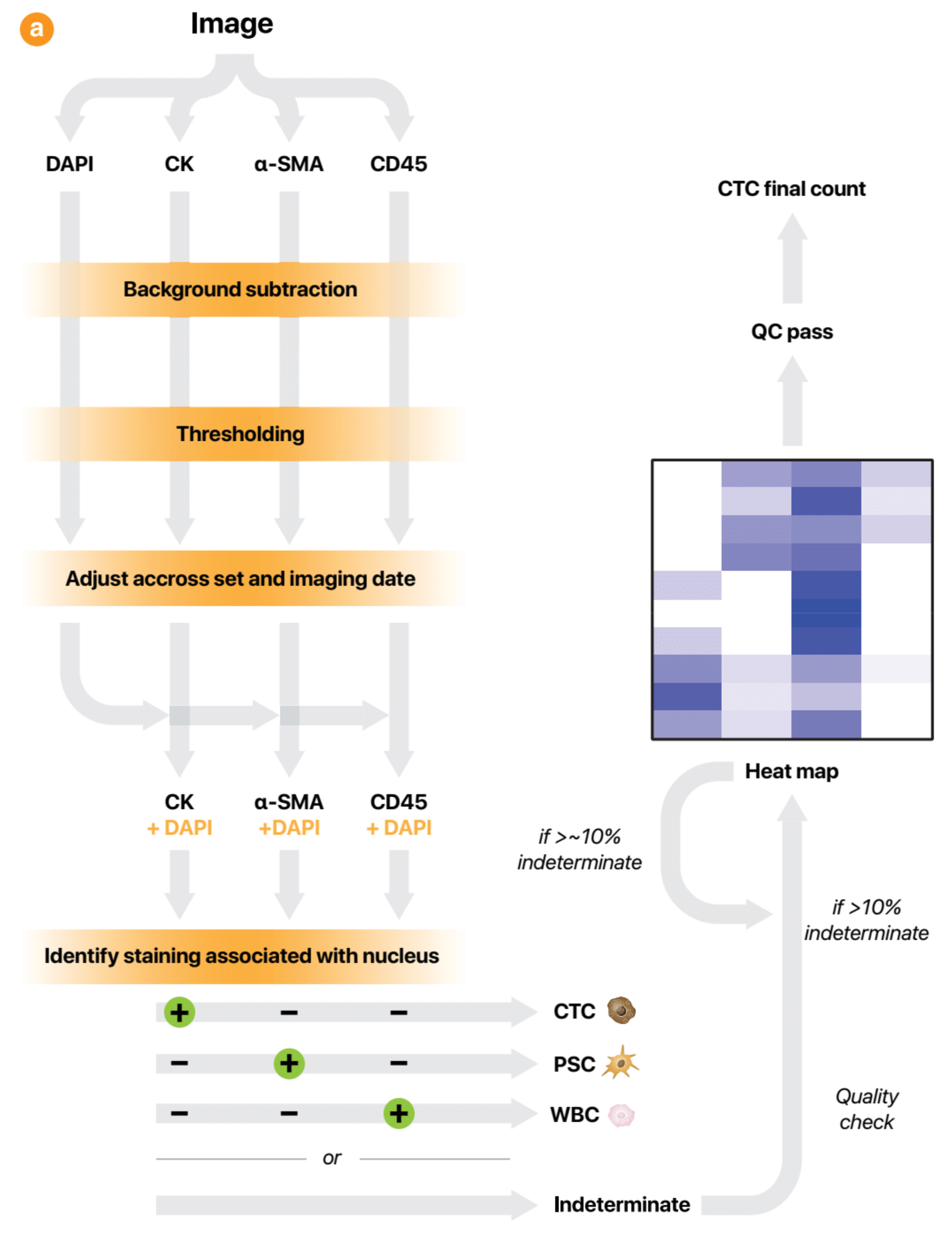
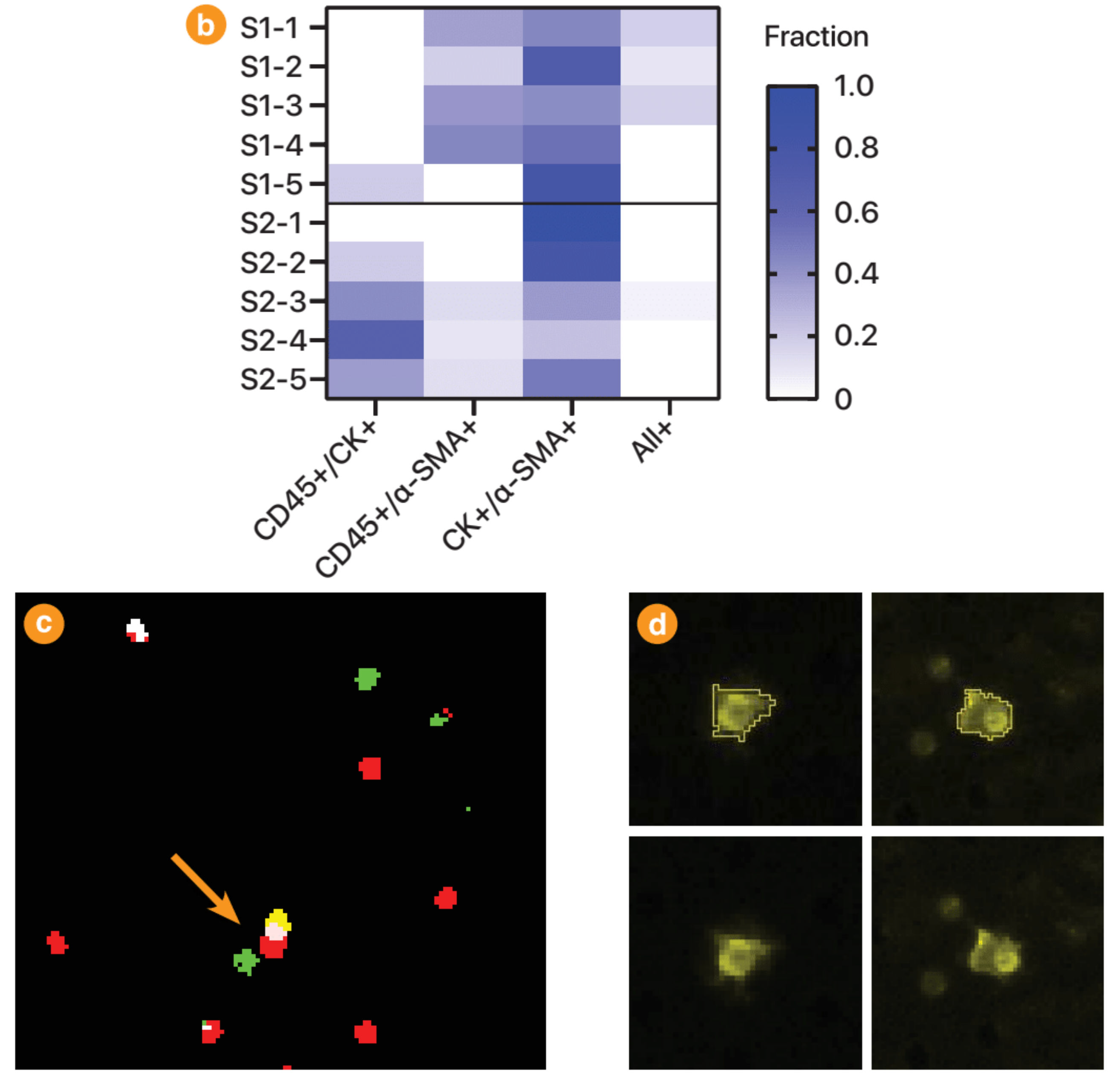
Appendix A.9. Immunohistochemistry
Appendix A.10. Single Cell RNA Sequencing
Appendix A.11. Bioinformatics
| Mouse Primary (MsPrim) | Mouse Secondary (MsSec) | Mouse Blood (MsBlood) | Cultured Cells (Cult) | |
|---|---|---|---|---|
| Reference genome used for alignment | Human/luc++ Mouse | Human/luc++ Mouse | Human/luc++ Mouse | Human/luc+ |
| Cell metrics | ||||
| Estimated number of cells | 1952 | 3850 | 6764 | 5131 |
| Estimated human cells | 260 | 84 | 1513 | 5131 |
| Estimated mouse cells | 1696 | 3767 | 5262 | - |
| Fraction GEMs with >1 cell (%) (95%CI) * | 2.3 (0.9−3.8) | 1.3 (0.0−3.5) | 0.8 (0.5−1.2) | - |
| Sequencing depth metrics | ||||
| Mean reads per cell | 131,113 | 68,694 | 35,043 | 48,214 |
| Median genes per cell (human) | 2449 | 664 | 94 | 3393 |
| Median genes per cell (mouse) | 1662 | 1752 | 1028 | - |
| Sequence saturation | 83.6% | 72.5% | 71.1% | 27.9% |
| Sequencing metrics | ||||
| Q30 bases in RNA read † | 93.4% | 93.6% | 93.6% | 94.1% |
| Alignment metrics | ||||
| Reads mapped confidently to genome | 89.3% | 88.0% | 84.4% | 93.8% |
| Human | 23.7% | 8.7% | 0.3% | 93.8% |
| Mouse | 65.6% | 79.2% | 84.1% | - |
| Reads mapped confidently to transcriptome | 55.3% | 56.1% | 55.1% | 69.9% |
| Human | 14.1% | 5.5% | 0.2% | 93.8% |
| Mouse | 41.3% | 50.5% | 54.9% | - |
| Human cells left after filtration | 100 | 40 | 75 | 2791 |
Appendix A.11.1. Circulating PSC Identification
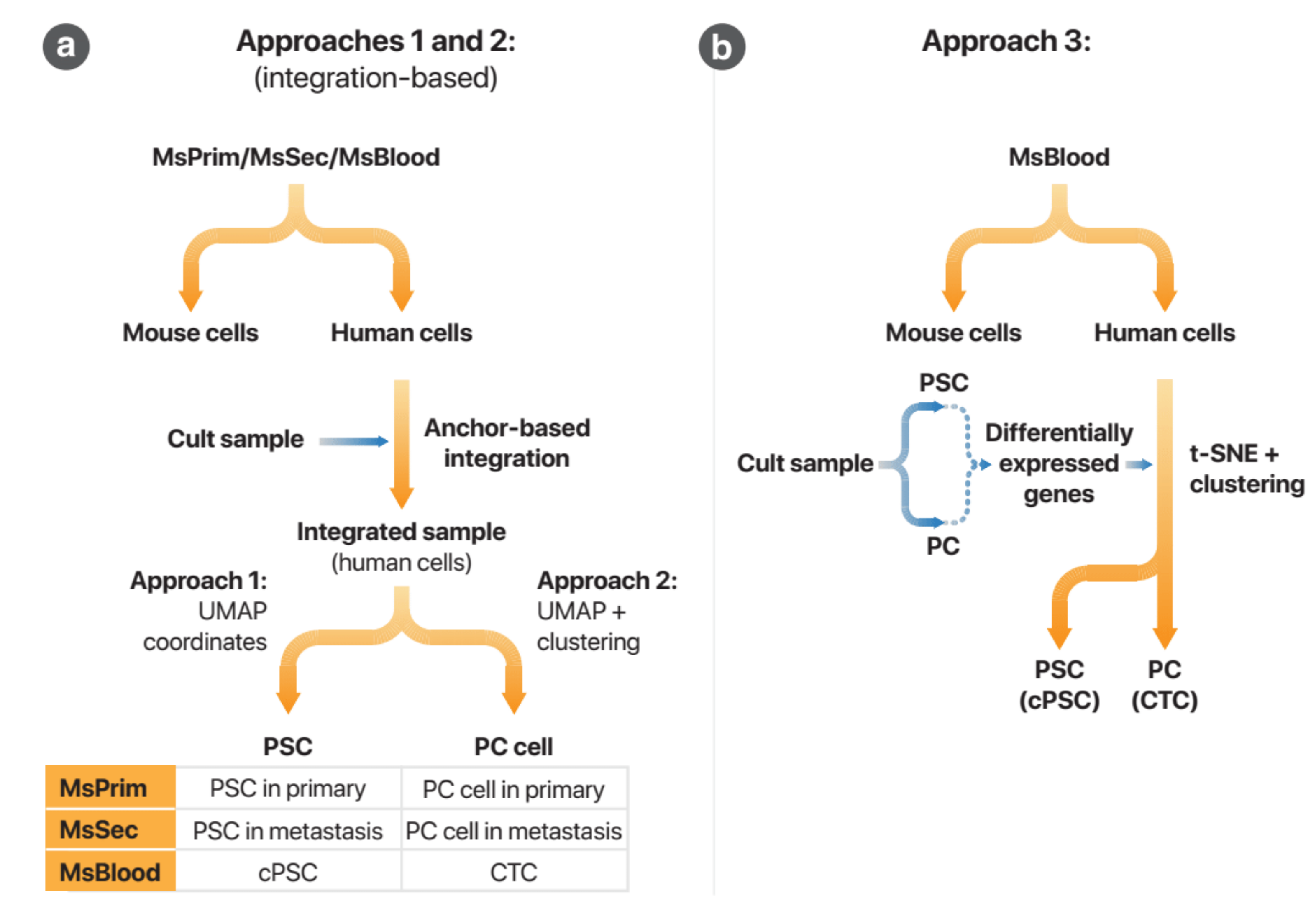
Appendix A.11.2. Differential Expression Analysis
Appendix A.11.3. Trajectory Analysis
Appendix A.12. Non-Bioinformatics Statistical Analysis
Appendix B
| (a) Multivariate model for disease progression, as measured by ventral radiant flux, over time. | ||||
| Coefficient (log 10 Scale) | 95% CI | z | p-Value | |
| Baseline slope: | ||||
| Treatment weeks (per week) | 0.130 | 0.101 to 0.159 | 8.79 | < 0.001 |
| Factors affecting slope: | ||||
| Gemcitabine (G) | −0.050 | −0.089 to −0.0113 | −2.53 | 0.011 |
| Rilotumumab + Compound A (HiCi) | −0.069 | −0.106 to −0.031 | −3.61 | < 0.001 |
| G × AR interaction | 0.064 | 0.0102 to 0.117 | 2.33 | 0.02 |
| Initial flux (per 10-fold change) | 0.070 | 0.053 to 0.087 | 8.14 | <0.001 |
| Other model terms: | ||||
| Initial flux (per 10-fold change) | 0.98 | 0.82 to 1.1 | 12.3 | < 0.001 |
| Intercept | 6.0 | 5.9 to 6.2 | 78.8 | < 0.001 |
| Random effects (intercept): | ||||
| Variance | 0.257 | 0.176 to 0.376 | ||
| (b) Rate of progression of disease as predicted by the multivariate model above | ||||
| n-Fold Change per Week | 95% CI | |||
| Baseline (initial flux 106 p/s, Ctrl) | 1.35 | 1.26 to 1.44 | ||
| Treatment groups: | ||||
| Rilotumumab + Compound A (HiCi) | 1.15 | 1.09 to 1.22 | ||
| Gemcitabine alone (G) | 1.20 | 1.13 to 1.28 | ||
| G+AR | 1.19 | 1.11 to 1.27 | ||
| Initial tumour burden: | ||||
| Flux of 10⁷ p/s, Ctrl group | 1.59 | 1.46 to 1.72 | ||
| Flux of 10⁸ p/s, Ctrl group | 1.87 | 1.67 to 2.08 | ||
| Odds Ratio | 95% CI | z | p-Value | |
|---|---|---|---|---|
| Gemcitabine alone (G) | 0.80 | 0.172 to 3.68 | −0.29 | 0.771 |
| Rilotumumab + Compound A (HiCi) | 0.15 | 0.0250 to 0.86 | −2.13 | 0.033 |
| Initial flux (per 10-fold change from 106 p/s) | 4.7 | 1.95 to 11.2 | 3.45 | 0.001 |
| Baseline odds (Ctrl, initial flux of 106 p/s) | 0.45 | 0.136 to 1.50 | −1.30 | 0.195 |
| (a) Multivariate model for disease progression, as measured by ventral radiant flux, over time | ||||
| Coefficient | 95% CI | z | p-Value | |
| Baseline slope: | ||||
| Treatment weeks (per week) | 0.199 | 0.153 to 0.246 | 8.39 | <0.001 |
| Factors affecting slope: | ||||
| Gemcitabine (G) | −0.051 | −0.119 to 0.0179 | −1.45 | 0.148 |
| Rilotumumab + Compound A (HiCi) | −0.086 | −0.152 to −0.019 | −2.54 | 0.011 |
| G×HiCi interaction | 0.092 | −0.0077 to 0.192 | 1.81 | 0.070 |
| Initial flux (per 10-fold change) | 0.0242 | −0.0035 to 0.052 | 1.71 | 0.087 |
| Other model terms: | ||||
| Initial flux (per 10-fold change) | 1.01 | 0.76 to 1.26 | 7.91 | <0.001 |
| Intercept (Baseline) | 6.06 | 5.8 to 6.4 | 37.9 | <0.001 |
| Random effects (intercept): | ||||
| Variance | 0.403 | 0.227 to 0.72 | ||
| (b) Rate of progression of disease as predicted by the multivariate model above | ||||
| n-Fold Change per Week Estimated by Model | 95% CI | |||
| Baseline (mouse with 106 p/s initial radiant flux, control group) | 1.58 | 1.42 to 1.76 | ||
| Treatment groups: | ||||
| Rilotumumab + Compound A (HiCi) | 1.30 | 1.16 to 1.46 | ||
| Gemcitabine alone (G) | 1.41 | 1.25 to 1.59 | ||
| G+HiCi | 1.43 | 1.22 to 1.68 | ||
| n-Fold Change | 95% CI | t | p-Value | |
|---|---|---|---|---|
| Gemcitabine (G) | 5.6 | 1.17 to 27.0 | 2.4 | 0.034 |
| Rilotumumab + Compound A (HiCi) | 0.47 | 0.100 to 2.18 | −1.08 | 0.302 |
| Intercept (baseline rate of Ki67+) | 104 | 24.6 to 437 | 6.77 | <0.001 |
| Coefficient (Change in % CD31+) | 95% CI | t | p-Value | |
|---|---|---|---|---|
| Gemcitabine (G) | 0.50 | 0.0036 to 1.0 | 2.22 | 0.049 |
| Rilotumumab + Compound A (HiCi) | −0.54 | −1.0 to −0.041 | −2.38 | 0.036 |
| Intercept (baseline percent CD31+) | 0.76 | 0.31 to 1.2 | 3.74 | 0.003 |
| n-Fold Change | 95% CI | z | p-Value | |
|---|---|---|---|---|
| Gemcitabine (G) | 0.370 | 0.162 to 0.844 | −2.36 | 0.018 |
| Compound A and rilotumumab (HiCi) | 0.396 | 0.172 to 0.91 | −2.18 | 0.029 |
| Last radiant flux > 106 p/s | 3.10 | 1.42 to 6.8 | 2.83 | 0.005 |
| Intercept (Baseline CTC count) | 4.9 | 2.88 to 8.5 | 5.81 | <0.001 |
| n-Fold Change | 95% CI | z | p-Value | |
|---|---|---|---|---|
| Gemcitabine (G) | 0.58 | 0.191 to 1.76 | −0.96 | 0.336 |
| Compound A and rilotumumab (HiCi) | 0.283 | 0.100 to 0.80 | −2.29 | 0.017 |
| Recurrent disease | 2.43 | 0.86 to 6.9 | 1.67 | 0.096 |
| Intercept (Baseline cPSC count) | 0.57 | 0.222 to 1.44 | −1.19 | 0.234 |
Appendix C
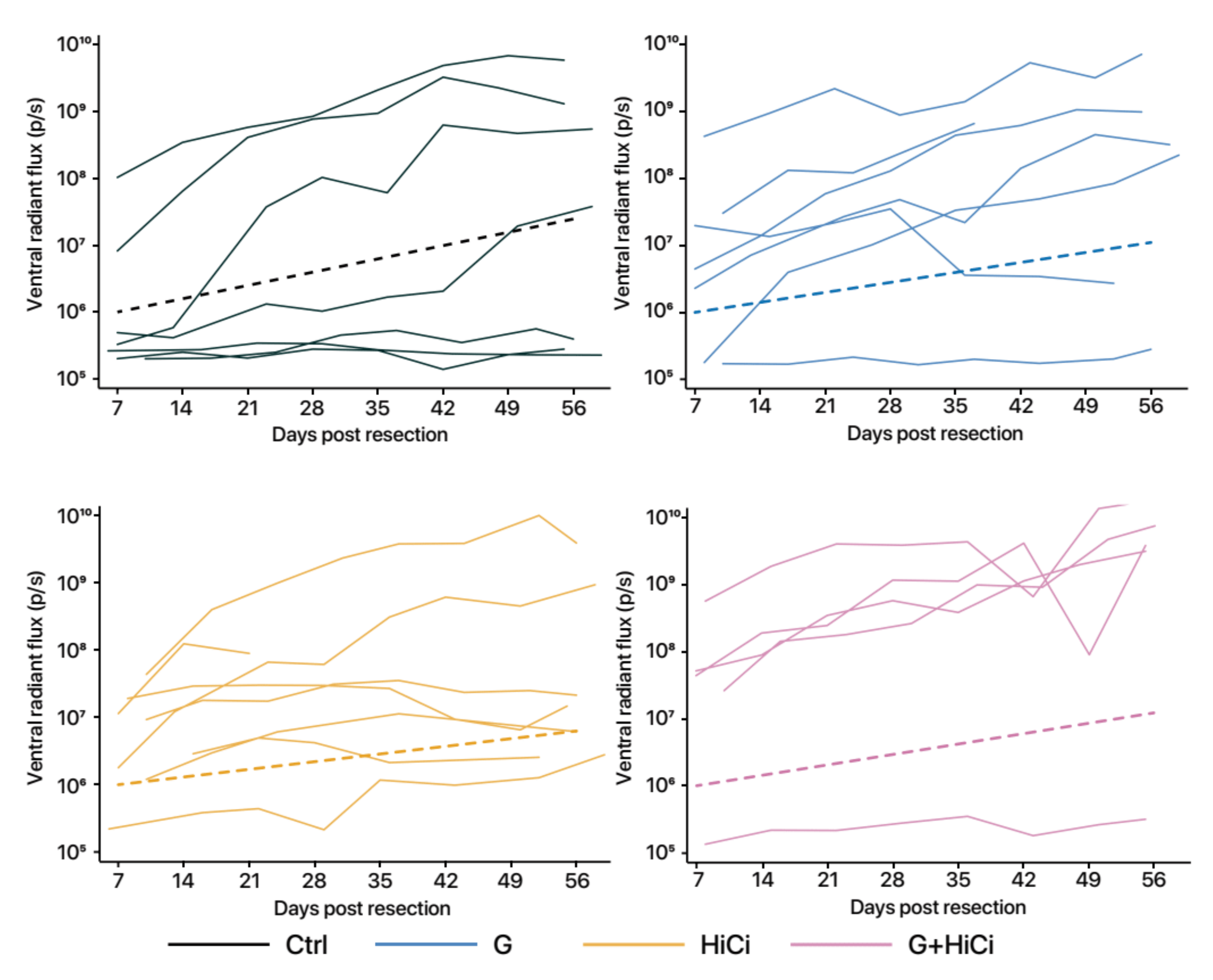
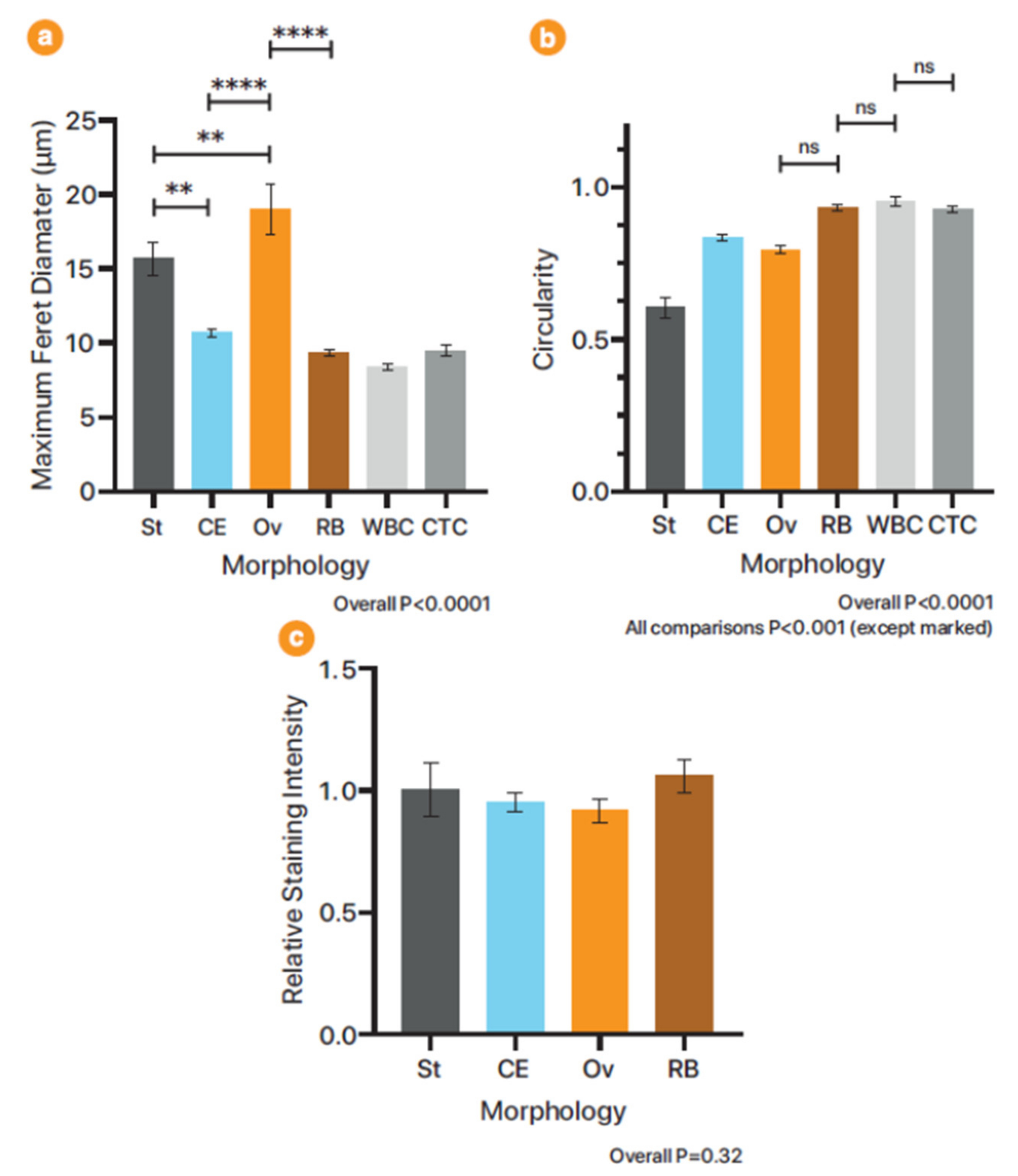

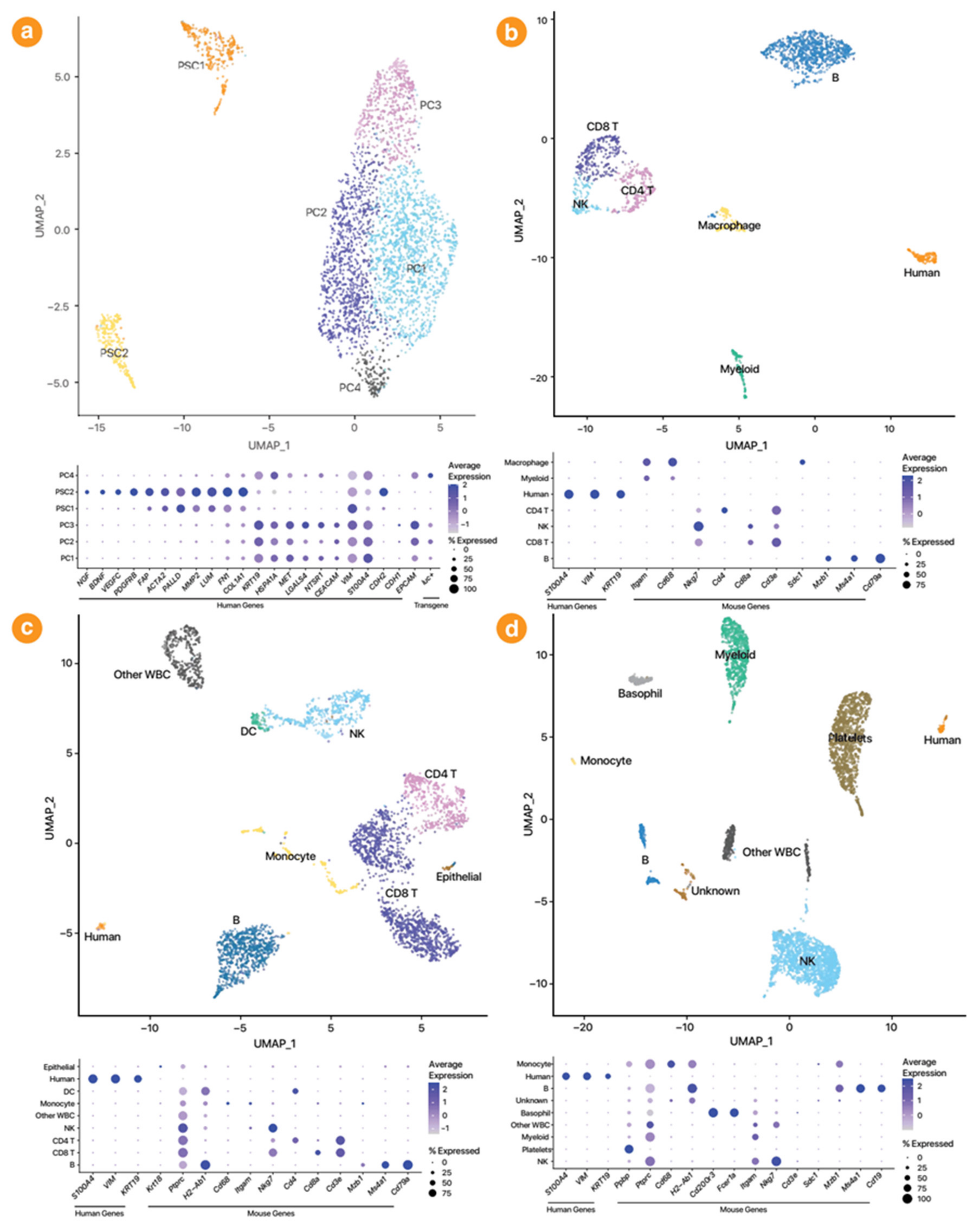
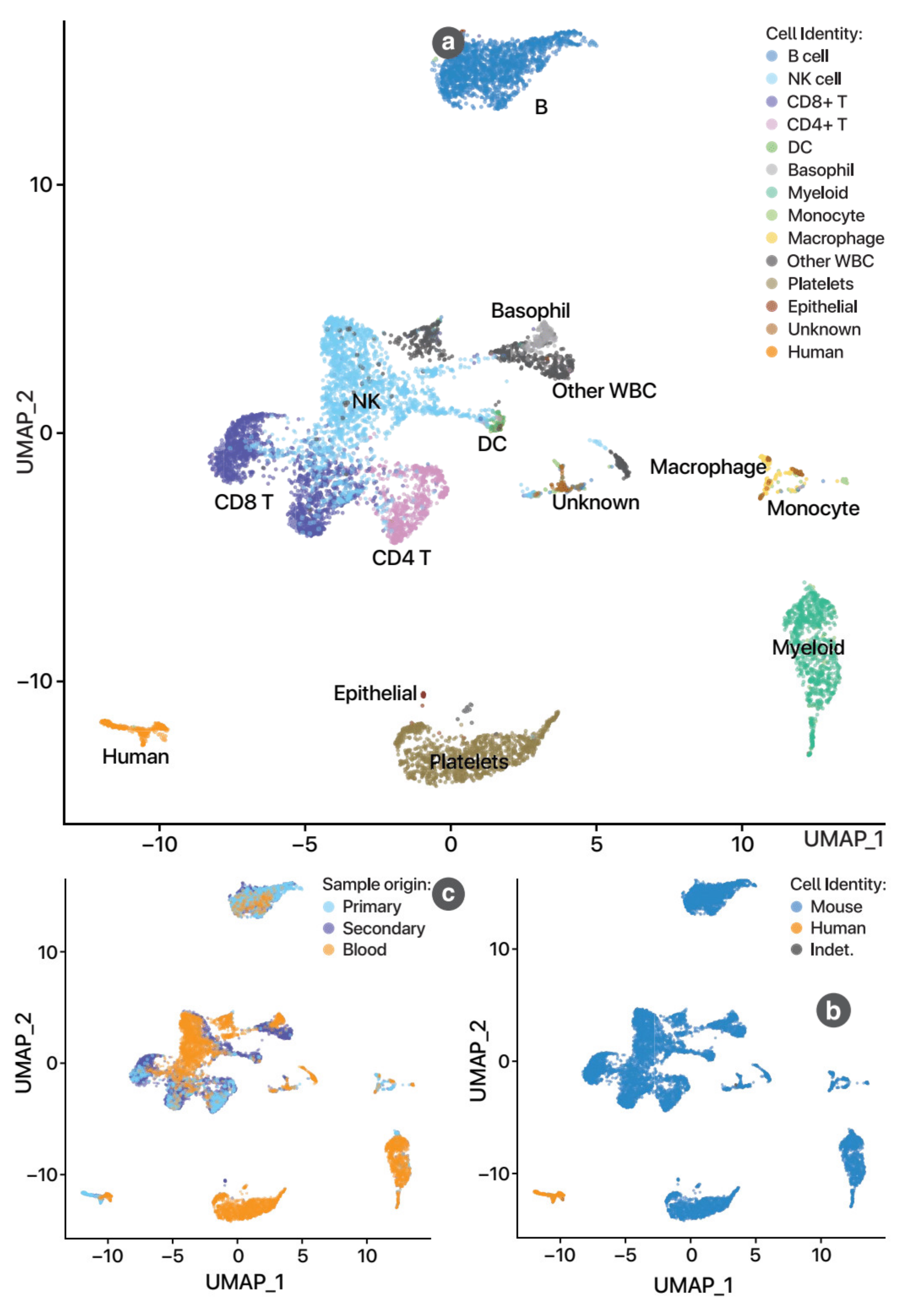

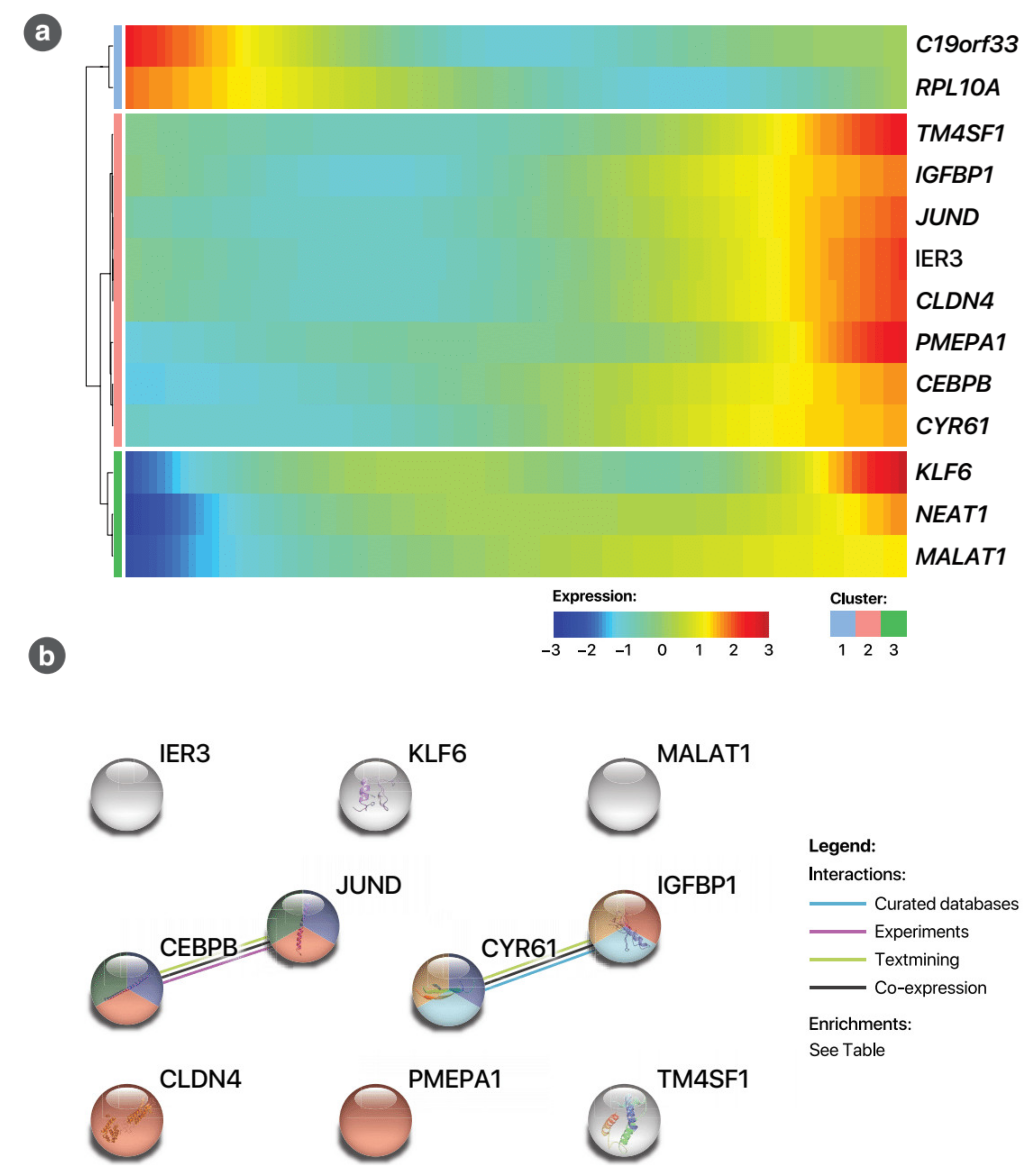
| Pathway Accession | Description | Genes | Bkg | FDR |
|---|---|---|---|---|
| GO Process | ||||
| GO:0045669 | Positive regulation of osteoblast differentiation | CEBPB, JUND | 58 | 0.0020 |
| GO:0009719 | Response to endogenous stimulus | CLDN4, JUND, CEBPB, IGFBP1, PMEPA1 | 1353 | 0.0345 |
| KEGG | ||||
| hsa04657 | IL-17 signalling pathway | CEBPB, JUND | 92 | 0.0100 |
| Reactome | ||||
| HSA-8957275 | Post-translational protein phosphorylation | CYR61, IGFBP1 | 106 | 0.0382 |
| HSA-381426 | Regulation of IGF transport and uptake by IGFBPs | CYR61, IGFBP1 | 123 | 0.0382 |
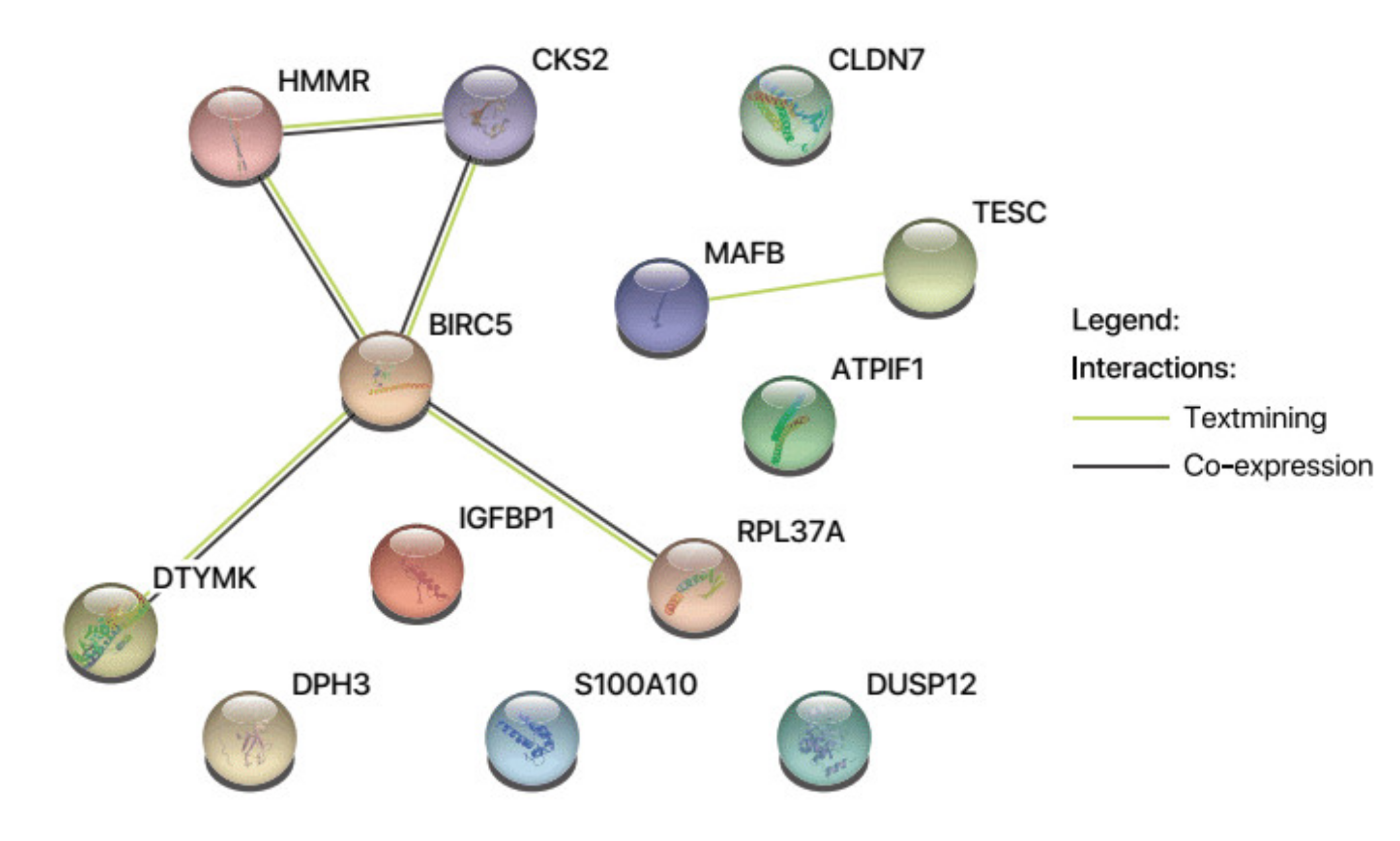
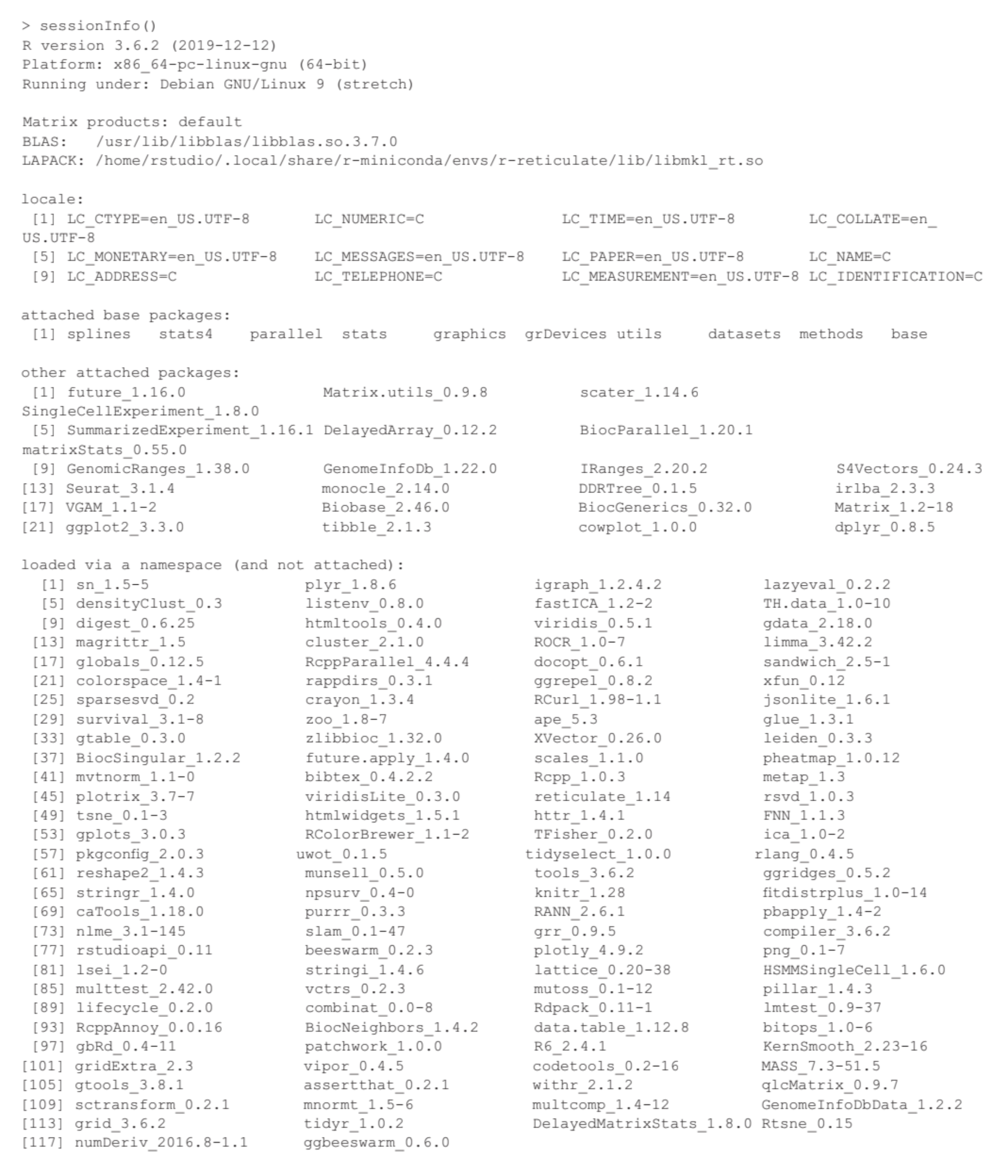
References
- Cancer Australia—Australian Government. Pancreatic Cancer Statistics. Available online: https://pancreatic-cancer.canceraustralia.gov.au/statistics (accessed on 17 January 2019).
- Noone, A.M.; Howlader, N.; Krapcho, M.; Miler, D.; Brest, A.; Yu, M.; Ruhl, J.; Tatlovich, Z.; Mariotto, A.; Lewis, D.R.; et al. SEER Cancer Statistics Review. Natl. Cancer Inst. 2014, 1975–2015. Based on November 2017 SEER Data Submission, Posted to the SEER Web Site, April 2018. Available online: https://seer.cancer.gov/csr/1975_2015/ (accessed on 1 April 2018).
- National Comprehensive Cancer Network. NCCN Guidelines: Pancreatic Adenocarcinoma. Available online: https://www.nccn.org/professionals/physician_gls/pdf/pancreatic.pdf (accessed on 2 February 2020).
- Oettle, H.; Post, S.; Neuhaus, P.; Gellert, K.; Langrehr, J.; Ridwelski, K.; Schramm, H.; Fahlke, J.; Zuelke, C.; Burkart, C.; et al. Adjuvant chemotherapy with gemcitabine vs observation in patients undergoing curative-intent resection of pancreatic cancer: A randomized controlled trial. JAMA 2007, 297, 267–277. [Google Scholar] [CrossRef]
- Ryan, D.P.; Mamon, H. Treatment for Potentially Resectable Exocrine Pancreatic Cancer. Available online: https://www.uptodate.com/contents/treatment-for-potentially-resectable-exocrine-pancreatic-cancer (accessed on 4 February 2020).
- Qian, L.W.; Mizumoto, K.; Maehara, N.; Ohuchida, K.; Inadome, N.; Saimura, M.; Nagai, E.; Matsumoto, K.; Nakamura, T.; Tanaka, M. Co-cultivation of pancreatic cancer cells with orthotopic tumor-derived fibroblasts: Fibroblasts stimulate tumor cell invasion via HGF secretion whereas cancer cells exert a minor regulative effect on fibroblasts HGF production. Cancer Lett. 2003, 190, 105–112. [Google Scholar] [CrossRef]
- Ide, T.; Kitajima, Y.; Miyoshi, A.; Ohtsuka, T.; Mitsuno, M.; Ohtaka, K.; Koga, Y.; Miyazaki, K. Tumor-stromal cell interaction under hypoxia increases the invasiveness of pancreatic cancer cells through the hepatocyte growth factor/c-Met pathway. Int. J. Cancer 2006, 119, 2750–2759. [Google Scholar] [CrossRef] [PubMed]
- Pothula, S.P.; Xu, Z.; Goldstein, D.; Biankin, A.V.; Pirola, R.C.; Wilson, J.S.; Apte, M.V. Hepatocyte growth factor inhibition: A novel therapeutic approach in pancreatic cancer. Br. J. Cancer 2016, 114, 269–280. [Google Scholar] [CrossRef]
- Pothula, S.P.; Xu, Z.; Goldstein, D.; Merrett, N.; Pirola, R.C.; Wilson, J.S.; Apte, M.V. Targeting the HGF/c-MET pathway: Stromal remodelling in pancreatic cancer. Oncotarget 2017, 8, 76722–76739. [Google Scholar] [CrossRef] [PubMed]
- Xu, Z.; Pang, T.; Liu, A.; Pothula, S.; Mekapogu, A.R.; Perera, C.; Murakami, T.; Goldstein, D.; Pirola, R.; Wilson, J.S.; et al. Targeting the HGF/c-MET pathway in advanced pancreatic cancer: A key element of treatment that limits primary tumour growth and eliminates metastasis. Br. J. Cancer 2020, 122, 1486–1495. [Google Scholar] [CrossRef] [PubMed]
- Groot, V.P.; Rezaee, N.; Wu, W.; Cameron, J.L.; Fishman, E.K.; Hruban, R.H.; Weiss, M.J.; Zheng, L.; Wolfgang, C.L.; He, J. Patterns, Timing, and Predictors of Recurrence Following Pancreatectomy for Pancreatic Ductal Adenocarcinoma. Ann. Surg. 2018, 267, 936–945. [Google Scholar] [CrossRef]
- Xu, Z.; Vonlaufen, A.; Phillips, P.A.; Fiala-Beer, E.; Zhang, X.; Yang, L.; Biankin, A.V.; Goldstein, D.; Pirola, R.C.; Wilson, J.S.; et al. Role of pancreatic stellate cells in pancreatic cancer metastasis. Am. J. Pathol. 2010, 177, 2585–2596. [Google Scholar] [CrossRef] [PubMed]
- Pang, T.C.Y.; Xu, Z.; Pothula, S.; Becker, T.; Goldstein, D.; Pirola, R.C.; Wilson, J.S.; Apte, M.V. Circulating pancreatic stellate (stromal) cells in pancreatic cancer-a fertile area for novel research. Carcinogenesis 2017, 38, 588–591. [Google Scholar] [CrossRef]
- Vonlaufen, A.; Joshi, S.; Qu, C.; Phillips, P.A.; Xu, Z.; Parker, N.R.; Toi, C.S.; Pirola, R.C.; Wilson, J.S.; Goldstein, D.; et al. Pancreatic stellate cells: Partners in crime with pancreatic cancer cells. Cancer Res. 2008, 68, 2085–2093. [Google Scholar] [CrossRef]
- Pang, T.C.Y.; Xu, Z.; Mekapogu, A.R.; Pothula, S.; Becker, T.M.; Goldstein, D.; Pirola, R.C.; Wilson, J.S.; Apte, M.V. An Orthotopic Resectional Mouse Model of Pancreatic Cancer. JoVE 2020, e61726. [Google Scholar] [CrossRef]
- Looney, W.B.; Trefil, J.S.; Schaffner, J.C.; Kovacs, C.J.; Hopkins, H.A. Solid tumor models for the assessment of different treatment modalities: I. Radiation-induced changes in growth rate characteristics of a solid tumor model. Proc. Natl. Acad. Sci. USA 1975, 72, 2662–2666. [Google Scholar] [CrossRef]
- Adams, D.L.; Alpaugh, R.K.; Tsai, S.; Tang, C.M.; Stefansson, S. Multi-Phenotypic subtyping of circulating tumor cells using sequential fluorescent quenching and restaining. Sci. Rep. 2016, 6, 33488. [Google Scholar] [CrossRef] [PubMed]
- Stuart, T.; Butler, A.; Hoffman, P.; Hafemeister, C.; Papalexi, E.; Mauck, W.M., III; Stoeckius, M.; Smibert, P.; Satija, R. Comprehensive integration of single cell data. bioRxiv 2018. [Google Scholar] [CrossRef] [PubMed]
- Qiu, X.; Mao, Q.; Tang, Y.; Wang, L.; Chawla, R.; Pliner, H.; Trapnell, C. Reverse graph embedding resolves complex single-cell developmental trajectories. BioRxiv 2017. [Google Scholar] [CrossRef]
- Lin, S.; Lin, Y.; Nery, J.R.; Urich, M.A.; Breschi, A.; Davis, C.A.; Dobin, A.; Zaleski, C.; Beer, M.A.; Chapman, W.C.; et al. Comparison of the transcriptional landscapes between human and mouse tissues. Proc. Natl. Acad. Sci. USA 2014, 111, 17224–17229. [Google Scholar] [CrossRef] [PubMed]
- Yoshioka, H.; Azuma, K.; Yamamoto, N.; Takahashi, T.; Nishio, M.; Katakami, N.; Ahn, M.J.; Hirashima, T.; Maemondo, M.; Kim, S.W.; et al. A randomized, double-blind, placebo-controlled, phase III trial of erlotinib with or without a c-Met inhibitor tivantinib (ARQ 197) in Asian patients with previously treated stage IIIB/IV nonsquamous nonsmall-cell lung cancer harboring wild-type epidermal growth factor receptor (ATTENTION study). Ann. Oncol. 2015, 26, 2066–2072. [Google Scholar] [CrossRef]
- Spigel, D.R.; Edelman, M.J.; O’Byrne, K.; Paz-Ares, L.; Shames, D.S.; Yu, W.; Paton, V.E.; Mok, T. Onartuzumab plus erlotinib versus erlotinib in previously treated stage IIIb or IV NSCLC: Results from the pivotal phase III randomized, multicenter, placebo-controlled METLung (OAM4971g) global trial. J. Clin. Oncol. 2014, 32, 8000. [Google Scholar] [CrossRef]
- Scagliotti, G.; von Pawel, J.; Novello, S.; Ramlau, R.; Favaretto, A.; Barlesi, F.; Akerley, W.; Orlov, S.; Santoro, A.; Spigel, D.; et al. Phase III Multinational, Randomized, Double-Blind, Placebo-Controlled Study of Tivantinib (ARQ 197) Plus Erlotinib Versus Erlotinib Alone in Previously Treated Patients With Locally Advanced or Metastatic Nonsquamous Non-Small-Cell Lung Cancer. J. Clin. Oncol. 2015, 33, 2667–2674. [Google Scholar] [CrossRef] [PubMed]
- Catenacci, D.V.T.; Tebbutt, N.C.; Davidenko, I.; Murad, A.M.; Al-Batran, S.E.; Ilson, D.H.; Tjulandin, S.; Gotovkin, E.; Karaszewska, B.; Bondarenko, I.; et al. Rilotumumab plus epirubicin, cisplatin, and capecitabine as first-line therapy in advanced MET-positive gastric or gastro-oesophageal junction cancer (RILOMET-1): A randomised, double-blind, placebo-controlled, phase 3 trial. Lancet Oncol. 2017, 18, 1467–1482. [Google Scholar] [CrossRef]
- Yu, J.; Ohuchida, K.; Mizumoto, K.; Ishikawa, N.; Ogura, Y.; Yamada, D.; Egami, T.; Fujita, H.; Ohashi, S.; Nagai, E.; et al. Overexpression of c-met in the early stage of pancreatic carcinogenesis; altered expression is not sufficient for progression from chronic pancreatitis to pancreatic cancer. World J. Gastroenterol. 2006, 12, 3878–3882. [Google Scholar] [CrossRef]
- Di Renzo, M.F.; Poulsom, R.; Olivero, M.; Comoglio, P.M.; Lemoine, N.R. Expression of the Met/hepatocyte growth factor receptor in human pancreatic cancer. Cancer Res. 1995, 55, 1129–1138. [Google Scholar]
- Hill, K.S.; Lorinczi, M.; Elferink, L.A. Altered down regulation of the receptor tyrosine kinase met in pancreatic adenocarcinoma cells. J. Exp. Ther. Oncol. 2010, 8, 297–312. [Google Scholar]
- The Human Protein Atlas. Expression of MET in Pancreatic Cancer—The Human Protein Atlas. Available online: https://www.proteinatlas.org/ENSG00000105976-MET/pathology/pancreatic+cancer (accessed on 8 November 2019).
- Pang, T.C.Y.; Wilson, J.S.; Apte, M.V. Pancreatic stellate cells: What’s new? Curr. Opin. Gastroenterol. 2017, 33, 366–373. [Google Scholar] [CrossRef]
- Bever, K.M.; Sugar, E.A.; Bigelow, E.; Sharma, R.; Laheru, D.; Wolfgang, C.L.; Jaffee, E.M.; Anders, R.A.; De Jesus-Acosta, A.; Zheng, L. The prognostic value of stroma in pancreatic cancer in patients receiving adjuvant therapy. Hpb 2015, 17, 292–298. [Google Scholar] [CrossRef]
- Wang, L.M.; Silva, M.A.; D’Costa, Z.; Bockelmann, R.; Soonawalla, Z.; Liu, S.; O’Neill, E.; Mukherjee, S.; McKenna, W.G.; Muschel, R.; et al. The prognostic role of desmoplastic stroma in pancreatic ductal adenocarcinoma. Oncotarget 2016, 7, 4183–4194. [Google Scholar] [CrossRef]
- Pothula, S.P.; Pirola, R.C.; Wilson, J.S.; Apte, M.V. Pancreatic stellate cells: Aiding and abetting pancreatic cancer progression. Pancreatology 2020. [Google Scholar] [CrossRef] [PubMed]
- Hwang, R.F.; Moore, T.; Arumugam, T.; Ramachandran, V.; Amos, K.D.; Rivera, A.; Ji, B.; Evans, D.B.; Logsdon, C.D. Cancer-associated stromal fibroblasts promote pancreatic tumor progression. Cancer Res. 2008, 68, 918–926. [Google Scholar] [CrossRef] [PubMed]
- Lampignano, R.; Schneck, H.; Neumann, M.; Fehm, T.; Neubauer, H. Enrichment, Isolation and Molecular Characterization of EpCAM-Negative Circulating Tumor Cells. Adv. Exp. Med. Biol. 2017, 994, 181–203. [Google Scholar] [CrossRef] [PubMed]
- Po, J.W.; Roohullah, A.; Lynch, D.; DeFazio, A.; Harrison, M.; Harnett, P.R.; Kennedy, C.; de Souza, P.; Becker, T.M. Improved ovarian cancer EMT-CTC isolation by immunomagnetic targeting of epithelial EpCAM and mesenchymal N-cadherin. J. Circ. Biomark. 2018, 7, 1849454418782617. [Google Scholar] [CrossRef] [PubMed]
- Gorges, T.M.; Tinhofer, I.; Drosch, M.; Rose, L.; Zollner, T.M.; Krahn, T.; von Ahsen, O. Circulating tumour cells escape from EpCAM-based detection due to epithelial-to-mesenchymal transition. BMC Cancer 2012, 12, 178. [Google Scholar] [CrossRef]
- Poruk, K.E.; Valero III, V.; Saunders, T.; Blackford, A.L.; Griffin, J.F.; Poling, J.; Hruban, R.H.; Anders, R.A.; Herman, J.; Zheng, L.; et al. Circulating Tumor Cell Phenotype Predicts Recurrence and Survival in Pancreatic Adenocarcinoma. Ann. Surg. 2016, 264, 1073–1081. [Google Scholar] [CrossRef]
- Ting, D.T.; Wittner, B.S.; Ligorio, M.; Vincent Jordan, N.; Shah, A.M.; Miyamoto, D.T.; Aceto, N.; Bersani, F.; Brannigan, B.W.; Xega, K.; et al. Single-cell RNA sequencing identifies extracellular matrix gene expression by pancreatic circulating tumor cells. Cell Rep. 2014, 8, 1905–1918. [Google Scholar] [CrossRef]
- Ohmura, E.; Okada, M.; Onoda, N.; Kamiya, Y.; Murakami, H.; Tsushima, T.; Shizume, K. Insulin-like growth factor I and transforming growth factor alpha as autocrine growth factors in human pancreatic cancer cell growth. Cancer Res. 1990, 50, 103–107. [Google Scholar]
- Bergmann, U.; Funatomi, H.; Yokoyama, M.; Beger, H.G.; Korc, M. Insulin-like growth factor I overexpression in human pancreatic cancer: Evidence for autocrine and paracrine roles. Cancer Res. 1995, 55, 2007–2011. [Google Scholar] [PubMed]
- Valsecchi, M.E.; McDonald, M.; Brody, J.R.; Hyslop, T.; Freydin, B.; Yeo, C.J.; Solomides, C.; Peiper, S.C.; Witkiewicz, A.K. Epidermal growth factor receptor and insulinlike growth factor 1 receptor expression predict poor survival in pancreatic ductal adenocarcinoma. Cancer 2012, 118, 3484–3493. [Google Scholar] [CrossRef]
- Hirakawa, T.; Yashiro, M.; Doi, Y.; Kinoshita, H.; Morisaki, T.; Fukuoka, T.; Hasegawa, T.; Kimura, K.; Amano, R.; Hirakawa, K. Pancreatic Fibroblasts Stimulate the Motility of Pancreatic Cancer Cells through IGF1/IGF1R Signaling under Hypoxia. PLoS ONE 2016, 11, e0159912. [Google Scholar] [CrossRef] [PubMed]
- Rosendahl, A.H.; Gundewar, C.; Said Hilmersson, K.; Ni, L.; Saleem, M.A.; Andersson, R. Conditionally immortalized human pancreatic stellate cell lines demonstrate enhanced proliferation and migration in response to IGF-I. Exp. Cell Res. 2015, 330, 300–310. [Google Scholar] [CrossRef] [PubMed]
- Mutgan, A.C.; Besikcioglu, H.E.; Wang, S.; Friess, H.; Ceyhan, G.O.; Demir, I.E. Insulin/IGF-driven cancer cell-stroma crosstalk as a novel therapeutic target in pancreatic cancer. Mol. Cancer 2018, 17, 66. [Google Scholar] [CrossRef]
- Billings, S.D.; Walsh, S.V.; Fisher, C.; Nusrat, A.; Weiss, S.W.; Folpe, A.L. Aberrant expression of tight junction-related proteins ZO-1, claudin-1 and occludin in synovial sarcoma: An immunohistochemical study with ultrastructural correlation. Mod. Pathol. 2004, 17, 141–149. [Google Scholar] [CrossRef]
- Schuetz, A.N.; Rubin, B.P.; Goldblum, J.R.; Shehata, B.; Weiss, S.W.; Liu, W.; Wick, M.R.; Folpe, A.L. Intercellular junctions in Ewing sarcoma/primitive neuroectodermal tumor: Additional evidence of epithelial differentiation. Mod. Pathol. 2005, 18, 1403–1410. [Google Scholar] [CrossRef] [PubMed]
- Pattabiraman, D.R.; Bierie, B.; Kober, K.I.; Thiru, P.; Krall, J.A.; Zill, C.; Reinhardt, F.; Tam, W.L.; Weinberg, R.A. Activation of PKA leads to mesenchymal-to-epithelial transition and loss of tumor-initiating ability. Science 2016, 351, aad3680. [Google Scholar] [CrossRef] [PubMed]
- Xue, R.; Hua, L.; Xu, W.; Gao, Y.; Pang, Y.; Hao, J. Derivation and Validation of the Potential Core Genes in Pancreatic Cancer for Tumor-Stroma Crosstalk. Biomed Res. Int. 2018, 2018, 4283673. [Google Scholar] [CrossRef] [PubMed]
- Tolg, C.; Hamilton, S.R.; Nakrieko, K.A.; Kooshesh, F.; Walton, P.; McCarthy, J.B.; Bissell, M.J.; Turley, E.A. Rhamm-/- fibroblasts are defective in CD44-mediated ERK1,2 motogenic signaling, leading to defective skin wound repair. J. Cell Biol. 2006, 175, 1017–1028. [Google Scholar] [CrossRef]
- Cheng, X.B.; Sato, N.; Kohi, S.; Koga, A.; Hirata, K. Receptor for Hyaluronic Acid-Mediated Motility is Associated with Poor Survival in Pancreatic Ductal Adenocarcinoma. J. Cancer 2015, 6, 1093–1098. [Google Scholar] [CrossRef] [PubMed]
- McCarthy, J.B.; El-Ashry, D.; Turley, E.A. Hyaluronan, Cancer-Associated Fibroblasts and the Tumor Microenvironment in Malignant Progression. Front. Cell Dev. Biol. 2018, 6, 48. [Google Scholar] [CrossRef]
- Hall, C.L.; Yang, B.; Yang, X.; Zhang, S.; Turley, M.; Samuel, S.; Lange, L.A.; Wang, C.; Curpen, G.D.; Savani, R.C.; et al. Overexpression of the hyaluronan receptor RHAMM is transforming and is also required for H-ras transformation. Cell. 1995, 82, 19–26. [Google Scholar] [CrossRef]
- Duda, D.G.; Duyverman, A.M.; Kohno, M.; Snuderl, M.; Steller, E.J.; Fukumura, D.; Jain, R.K. Malignant cells facilitate lung metastasis by bringing their own soil. Proc. Natl. Acad. Sci. USA 2010, 107, 21677–21682. [Google Scholar] [CrossRef]
- Stuart, T.; Butler, A.; Hoffman, P.; Hafemeister, C.; Papalexi, E.; Mauck, W.M., 3rd; Hao, Y.; Stoeckius, M.; Smibert, P.; Satija, R. Comprehensive Integration of Single-Cell Data. Cell 2019, 177, 1888–1902.e21. [Google Scholar] [CrossRef] [PubMed]
- Cabili, M.N.; Trapnell, C.; Goff, L.; Koziol, M.; Tazon-Vega, B.; Regev, A.; Rinn, J.L. Integrative annotation of human large intergenic noncoding RNAs reveals global properties and specific subclasses. Genes Dev. 2011, 25, 1915–1927. [Google Scholar] [CrossRef]
- Van der Maaten, L.; Hinton, G. Visualizing Data using t-SNE. J. Mach. Learn. Res. 2008, 9, 2579–2605. [Google Scholar]
- Szklarczyk, D.; Gable, A.L.; Lyon, D.; Junge, A.; Wyder, S.; Huerta-Cepas, J.; Simonovic, M.; Doncheva, N.T.; Morris, J.H.; Bork, P.; et al. STRING v11: Protein-protein association networks with increased coverage, supporting functional discovery in genome-wide experimental datasets. Nucleic Acids Res. 2019, 47, D607–D613. [Google Scholar] [CrossRef] [PubMed]
- Kanehisa, M.; Goto, S. KEGG: Kyoto encyclopedia of genes and genomes. Nucleic Acids Res. 2000, 28, 27–30. [Google Scholar] [CrossRef]
- Jassal, B.; Matthews, L.; Viteri, G.; Gong, C.; Lorente, P.; Fabregat, A.; Sidiropoulos, K.; Cook, J.; Gillespie, M.; Haw, R.; et al. The reactome pathway knowledgebase. Nucleic Acids Res. 2020, 48, D498–D503. [Google Scholar] [CrossRef] [PubMed]
- Mi, H.; Muruganujan, A.; Ebert, D.; Huang, X.; Thomas, P.D. PANTHER version 14: More genomes, a new PANTHER GO-slim and improvements in enrichment analysis tools. Nucleic Acids Res. 2019, 47, D419–D426. [Google Scholar] [CrossRef] [PubMed]
- Gould, W. Use Poisson Rather than Regress; Tell a Friend. Available online: https://blog.stata.com/2011/08/22/use–poisson–rather–than-regress–tell-a–friend/ (accessed on 23 January 2020).
- Freedman, D.A. On the So-Called “Huber Sandwich Estimator” and “Robust Standard Errors”. Am. Stat. 2006, 60, 299–302. [Google Scholar] [CrossRef]
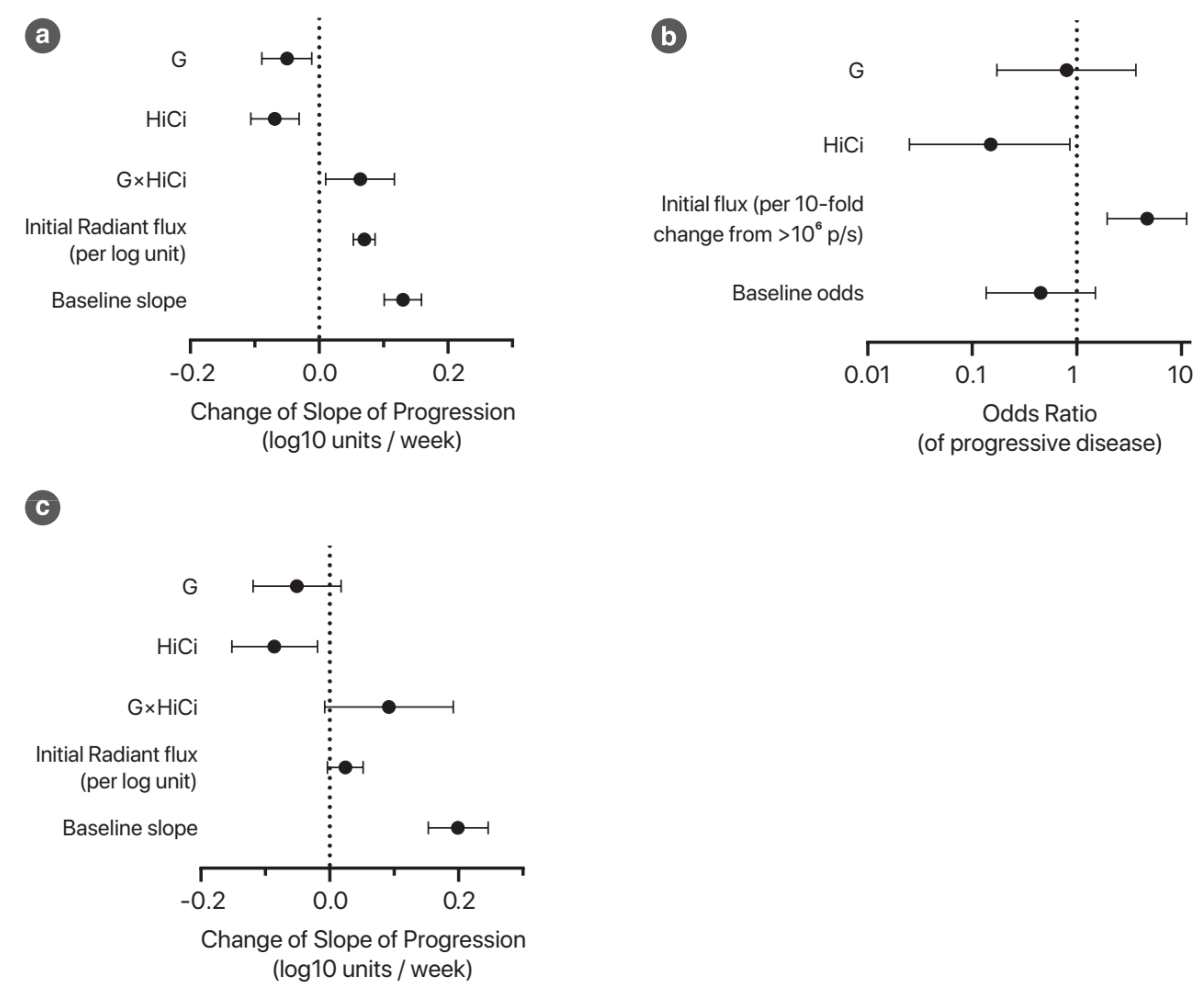
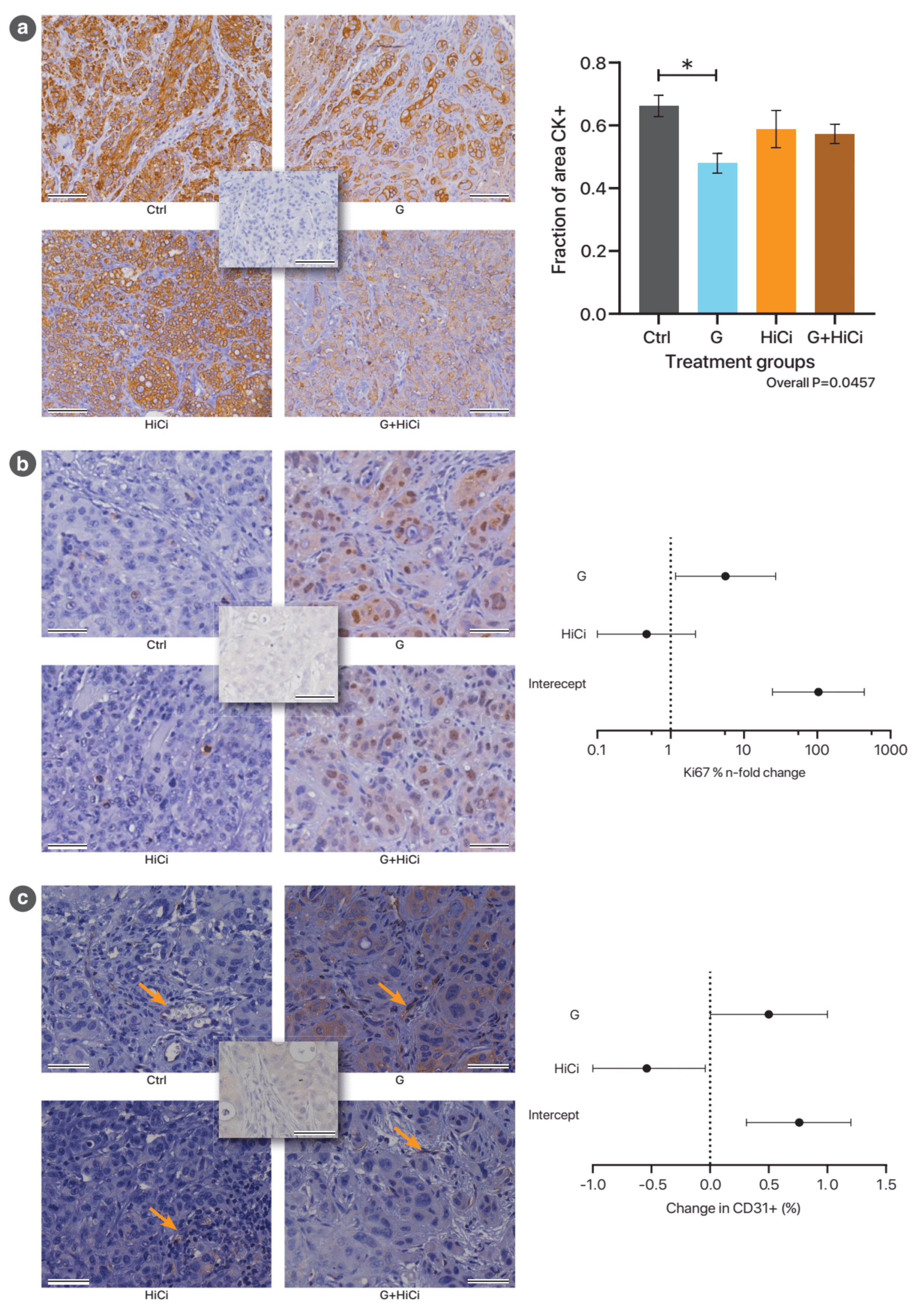
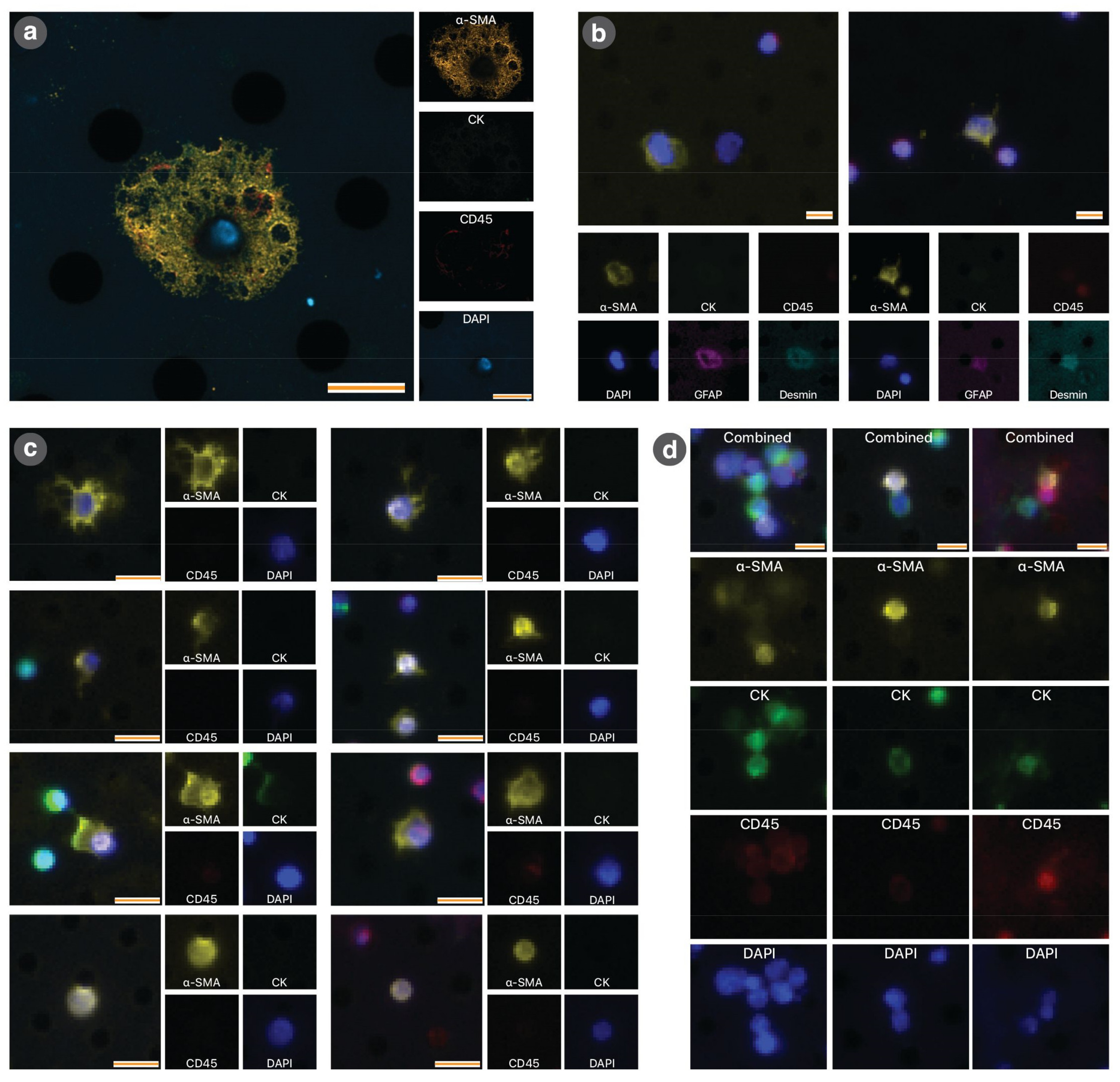
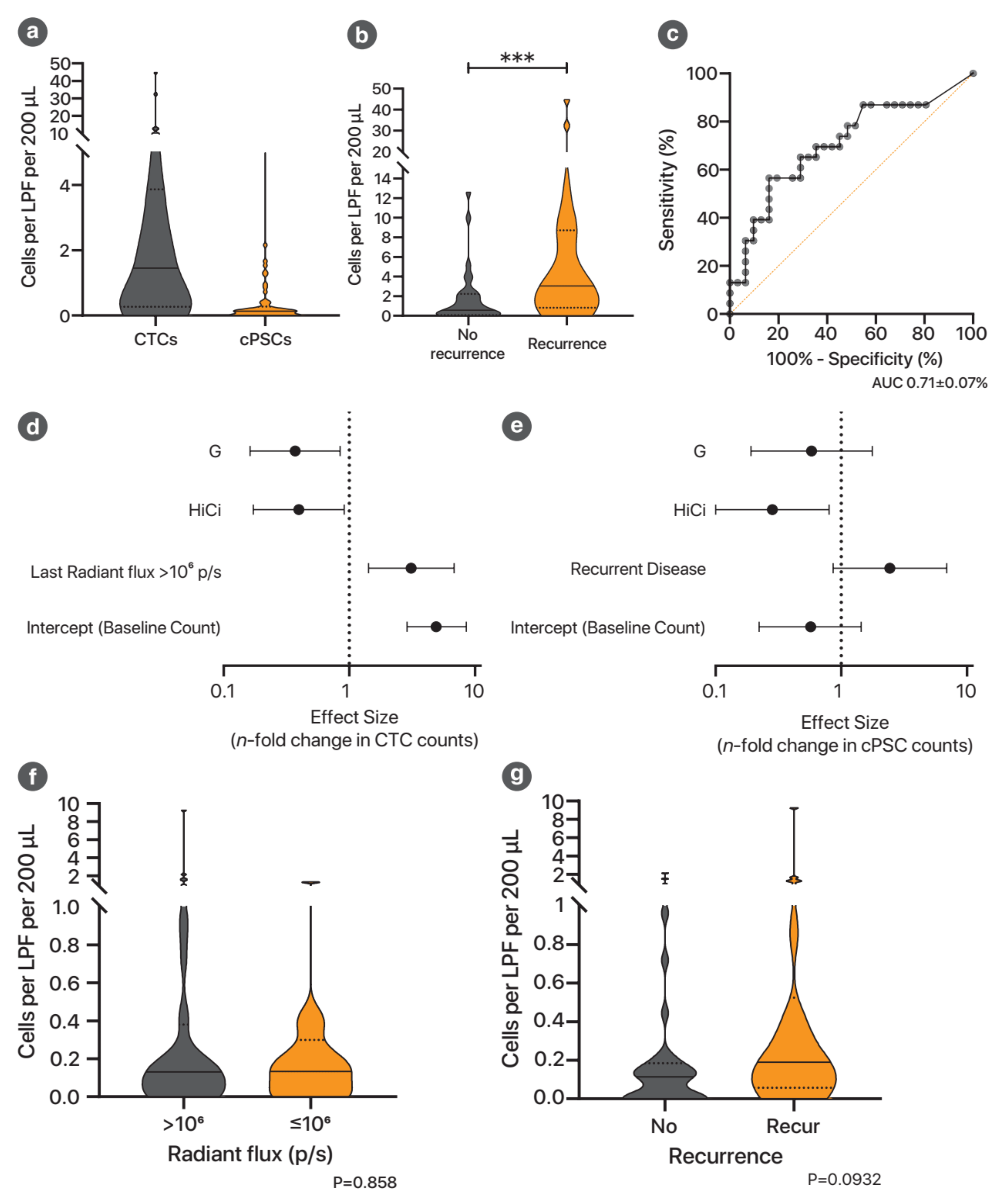
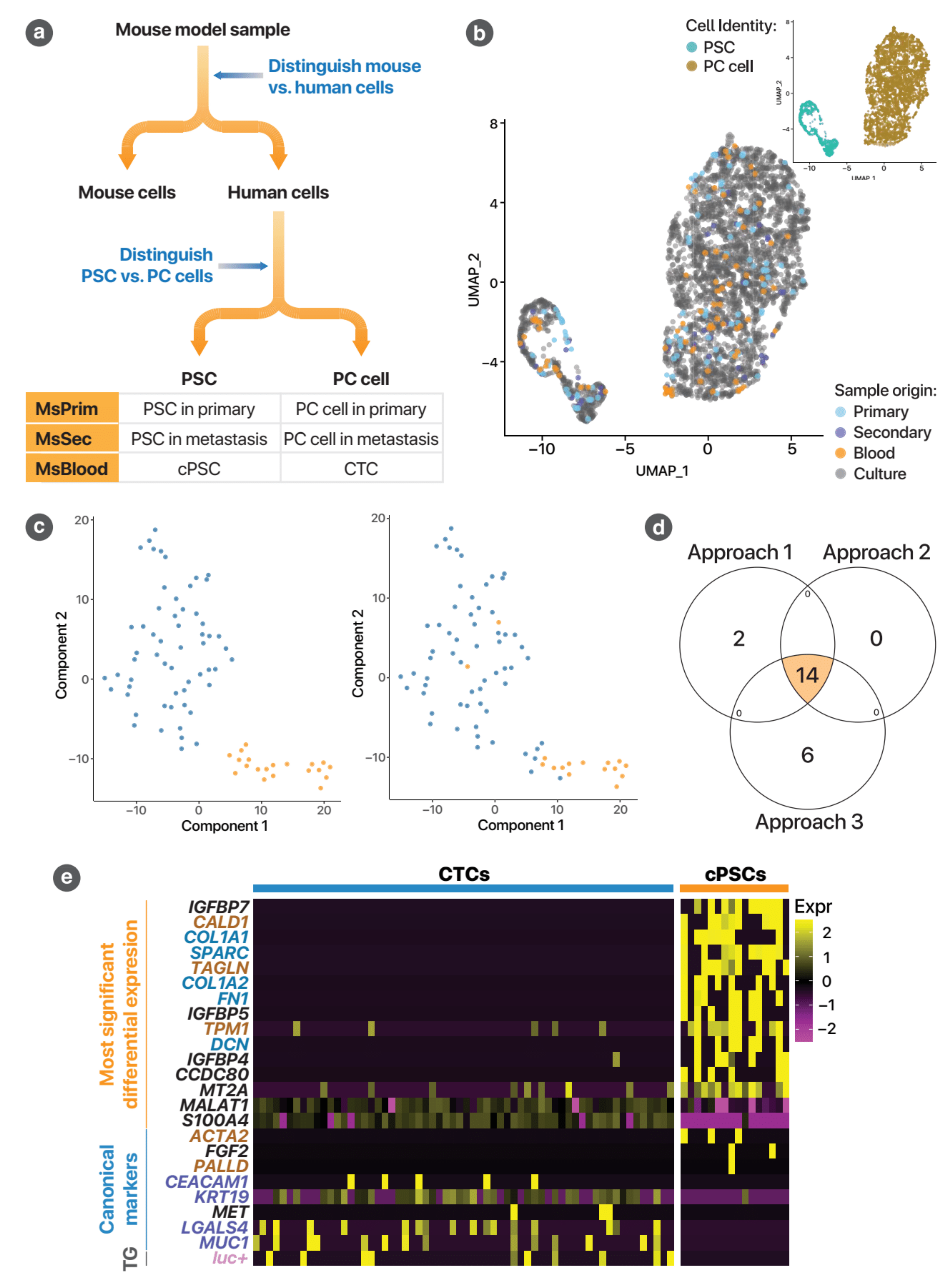
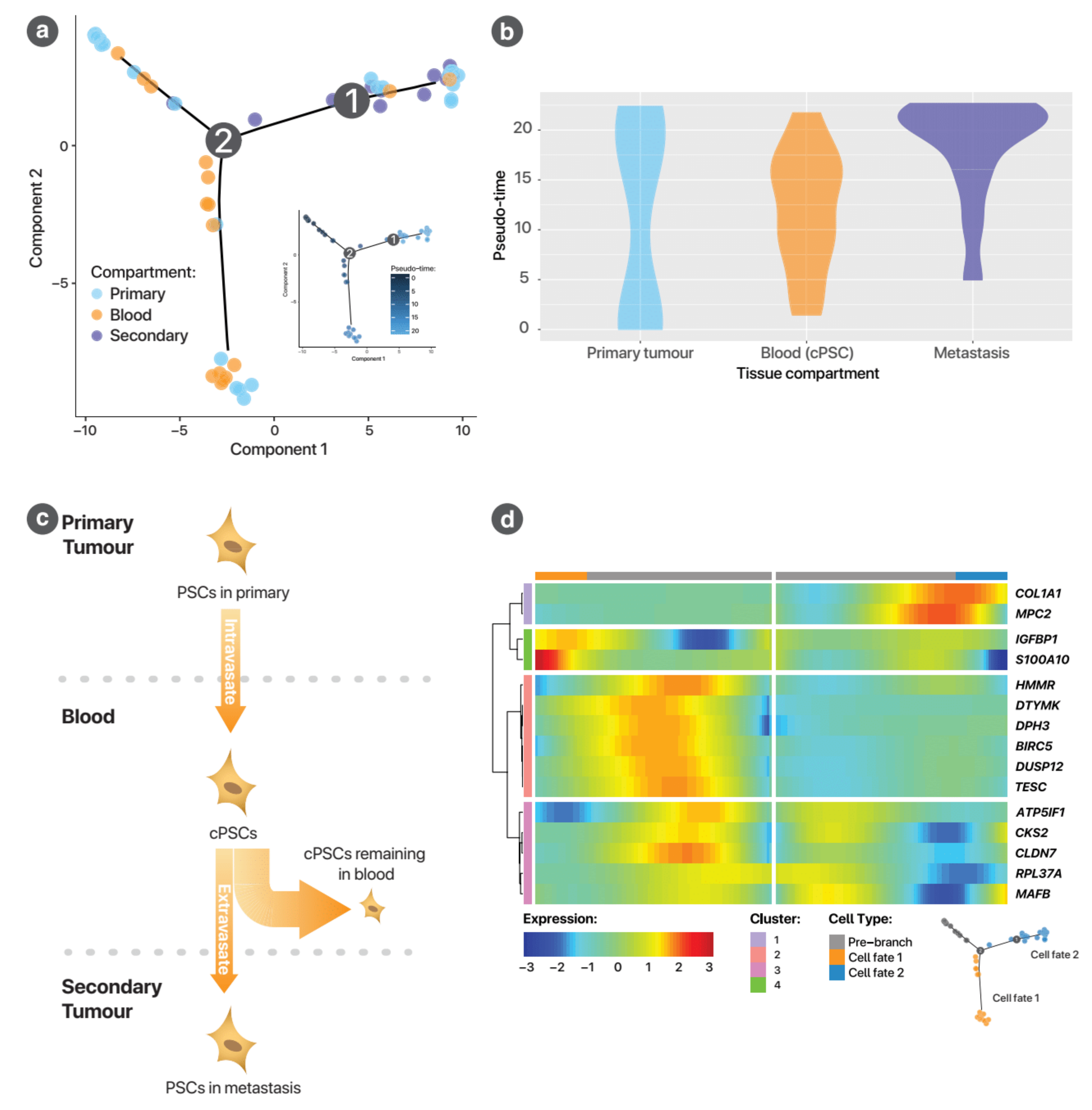
| Treatments | Ctrl | G | HiCi | G+HiCi | p-Value |
|---|---|---|---|---|---|
| n (%) or mean ± SE | |||||
| n (%) | 14 (23%) | 15 (24%) | 18 (29%) | 15 (24%) | |
| Resection Characteristics: | |||||
| Resected tumour vol (mm3) | 156 ± 22 | 217 ± 31 | 175 ± 20 | 205 ± 19 | 0.269 |
| Macroscopically clear margins | 14 (100%) | 15 (100%) | 18 (100%) | 15 (100%) | |
| Extra-pancreatic involvement | 3 (21%) | 4 (27%) | 8 (44%) | 4 (27%) | 0.560 |
| Tumour Burden at Commencement: | |||||
| Ventral radiant flux at treatment start (base 10 log units) (10x p/s) | 5.8 ± 0.22 | 6.0 ± 0.27 | 5.9 ± 0.19 | 6.0 ± 0.31 | 0.925 |
Publisher’s Note: MDPI stays neutral with regard to jurisdictional claims in published maps and institutional affiliations. |
© 2021 by the authors. Licensee MDPI, Basel, Switzerland. This article is an open access article distributed under the terms and conditions of the Creative Commons Attribution (CC BY) license (https://creativecommons.org/licenses/by/4.0/).
Share and Cite
Pang, T.C.Y.; Xu, Z.; Mekapogu, A.R.; Pothula, S.; Becker, T.; Corley, S.; Wilkins, M.R.; Goldstein, D.; Pirola, R.; Wilson, J.; et al. HGF/c-Met Inhibition as Adjuvant Therapy Improves Outcomes in an Orthotopic Mouse Model of Pancreatic Cancer. Cancers 2021, 13, 2763. https://doi.org/10.3390/cancers13112763
Pang TCY, Xu Z, Mekapogu AR, Pothula S, Becker T, Corley S, Wilkins MR, Goldstein D, Pirola R, Wilson J, et al. HGF/c-Met Inhibition as Adjuvant Therapy Improves Outcomes in an Orthotopic Mouse Model of Pancreatic Cancer. Cancers. 2021; 13(11):2763. https://doi.org/10.3390/cancers13112763
Chicago/Turabian StylePang, Tony C. Y., Zhihong Xu, Alpha Raj Mekapogu, Srinivasa Pothula, Therese Becker, Susan Corley, Marc R. Wilkins, David Goldstein, Romano Pirola, Jeremy Wilson, and et al. 2021. "HGF/c-Met Inhibition as Adjuvant Therapy Improves Outcomes in an Orthotopic Mouse Model of Pancreatic Cancer" Cancers 13, no. 11: 2763. https://doi.org/10.3390/cancers13112763
APA StylePang, T. C. Y., Xu, Z., Mekapogu, A. R., Pothula, S., Becker, T., Corley, S., Wilkins, M. R., Goldstein, D., Pirola, R., Wilson, J., & Apte, M. (2021). HGF/c-Met Inhibition as Adjuvant Therapy Improves Outcomes in an Orthotopic Mouse Model of Pancreatic Cancer. Cancers, 13(11), 2763. https://doi.org/10.3390/cancers13112763







